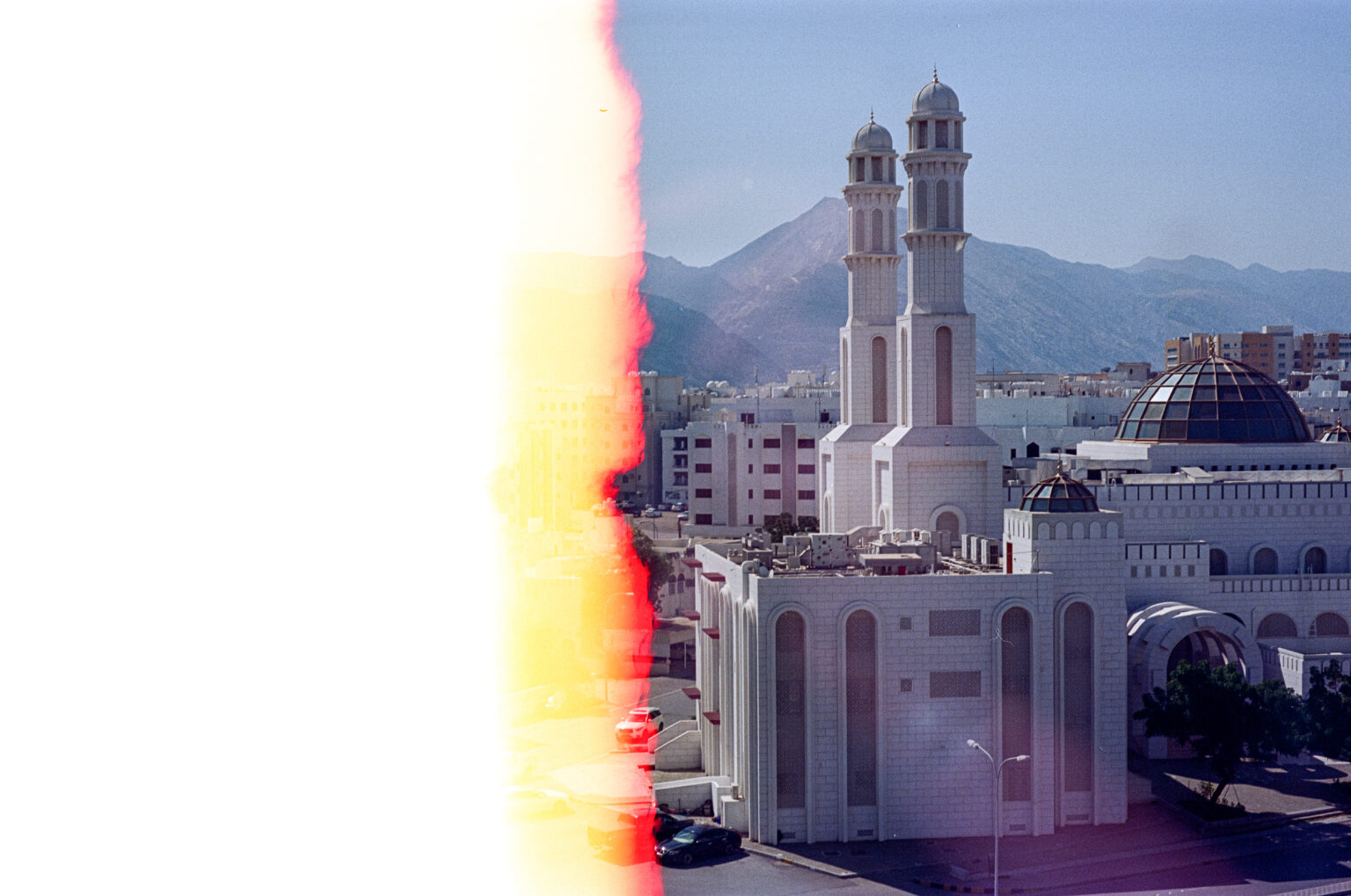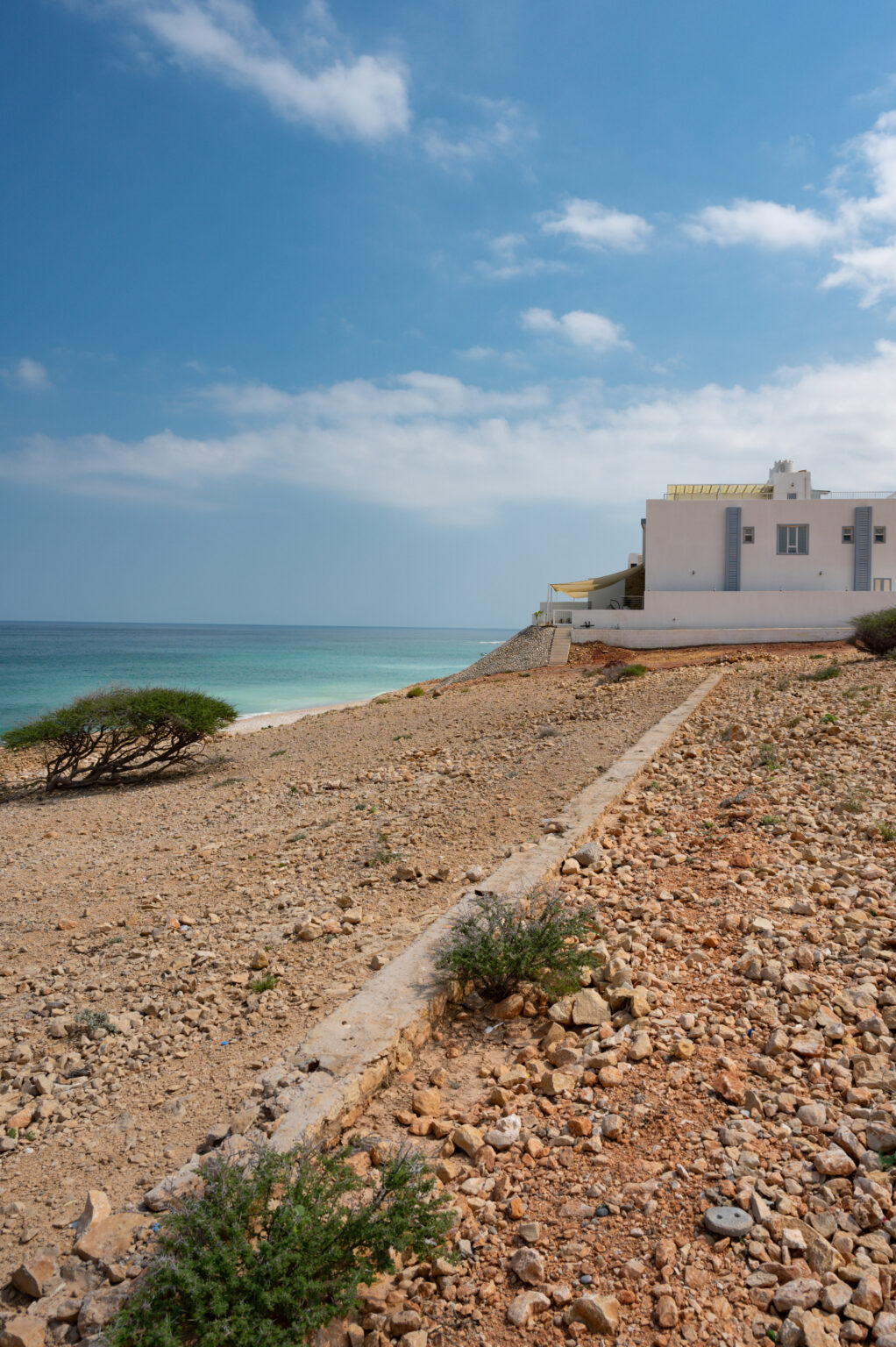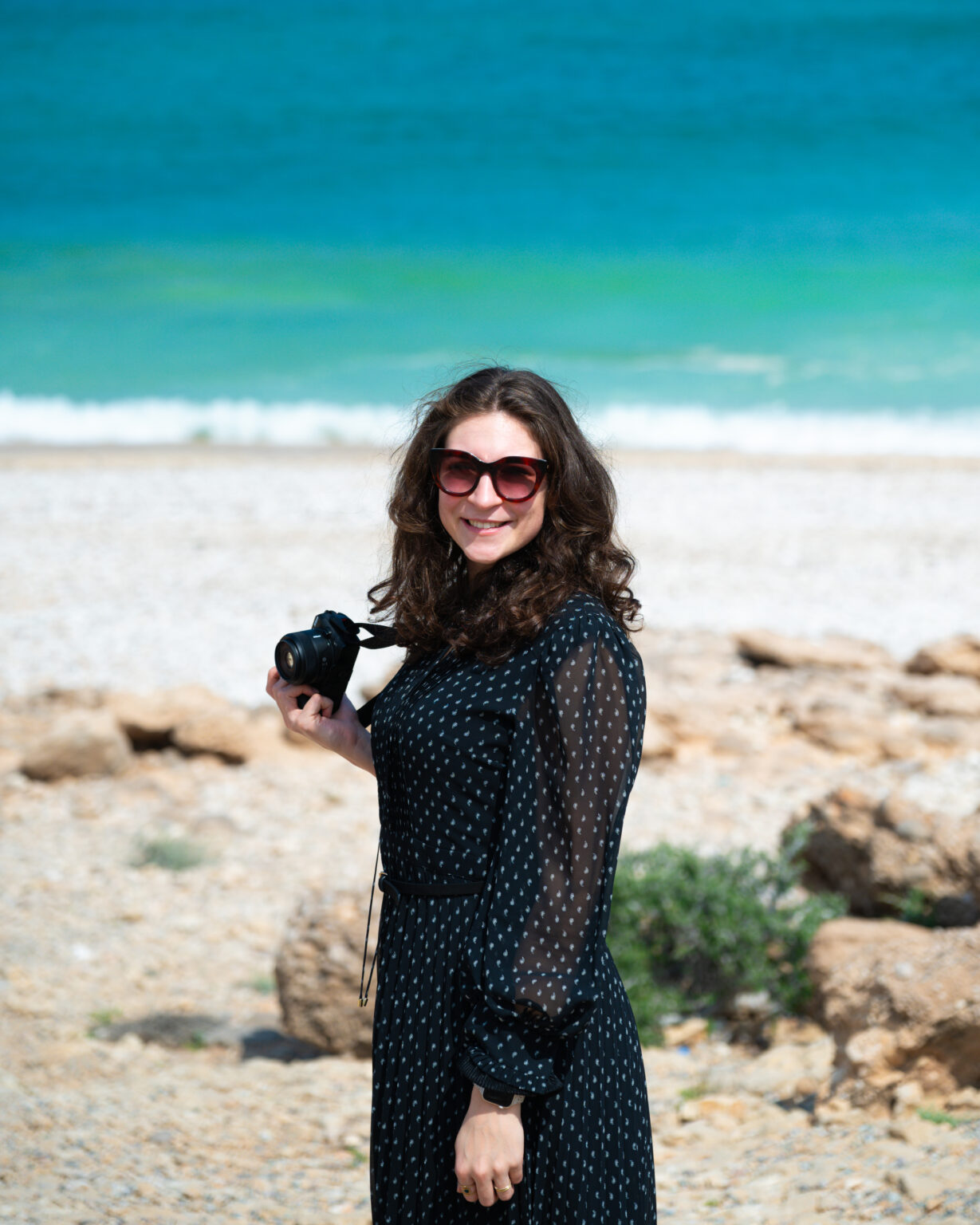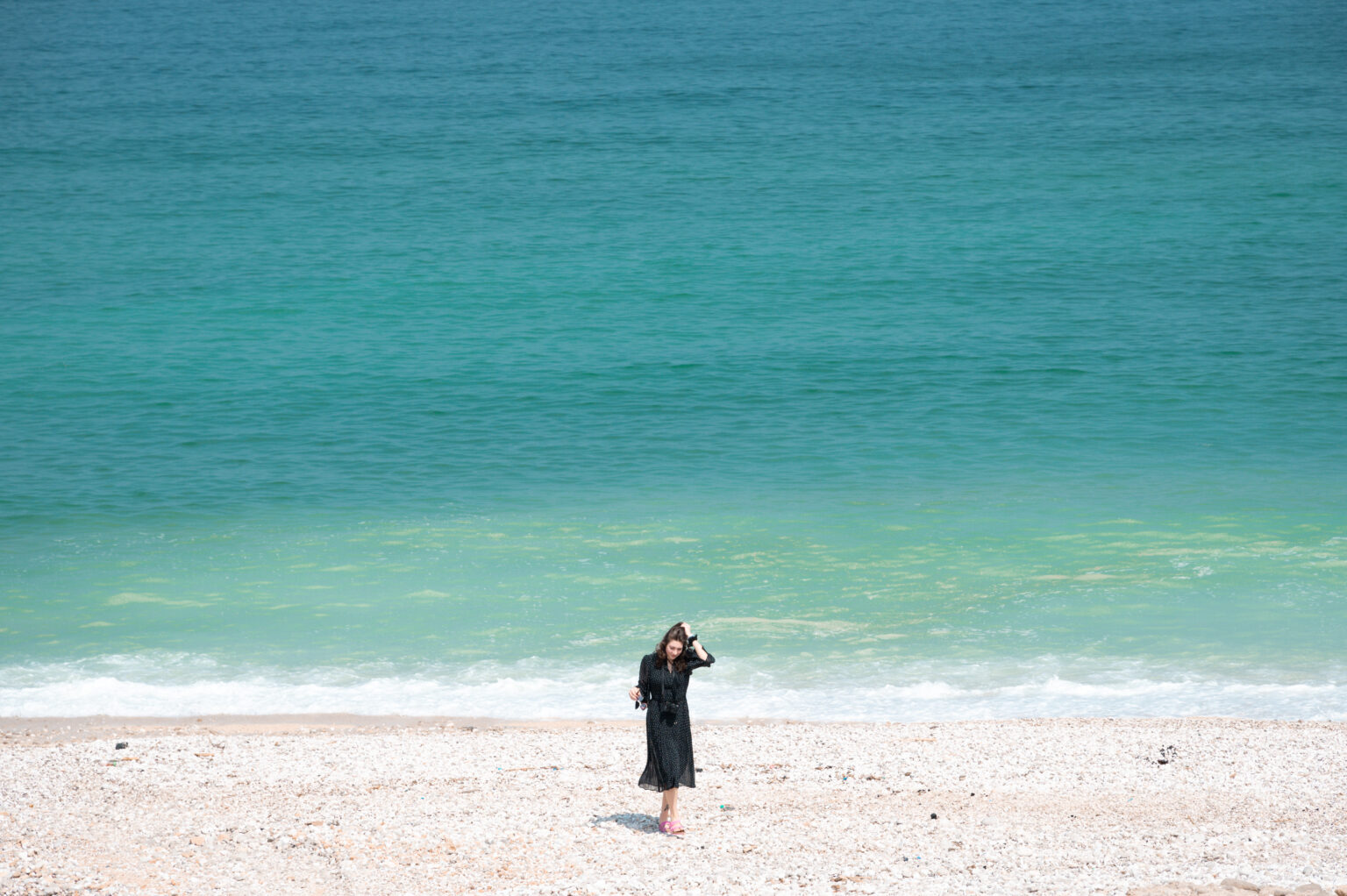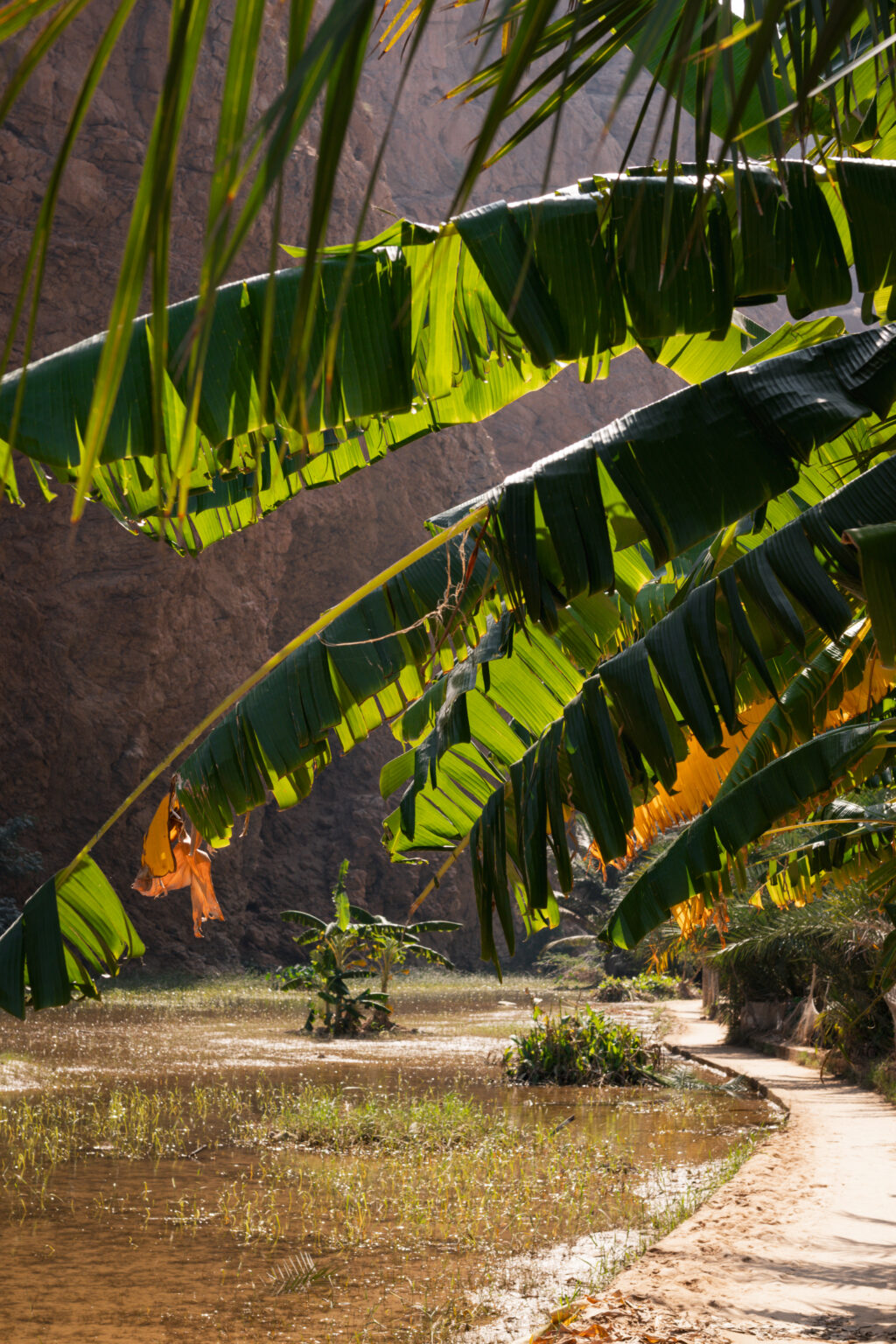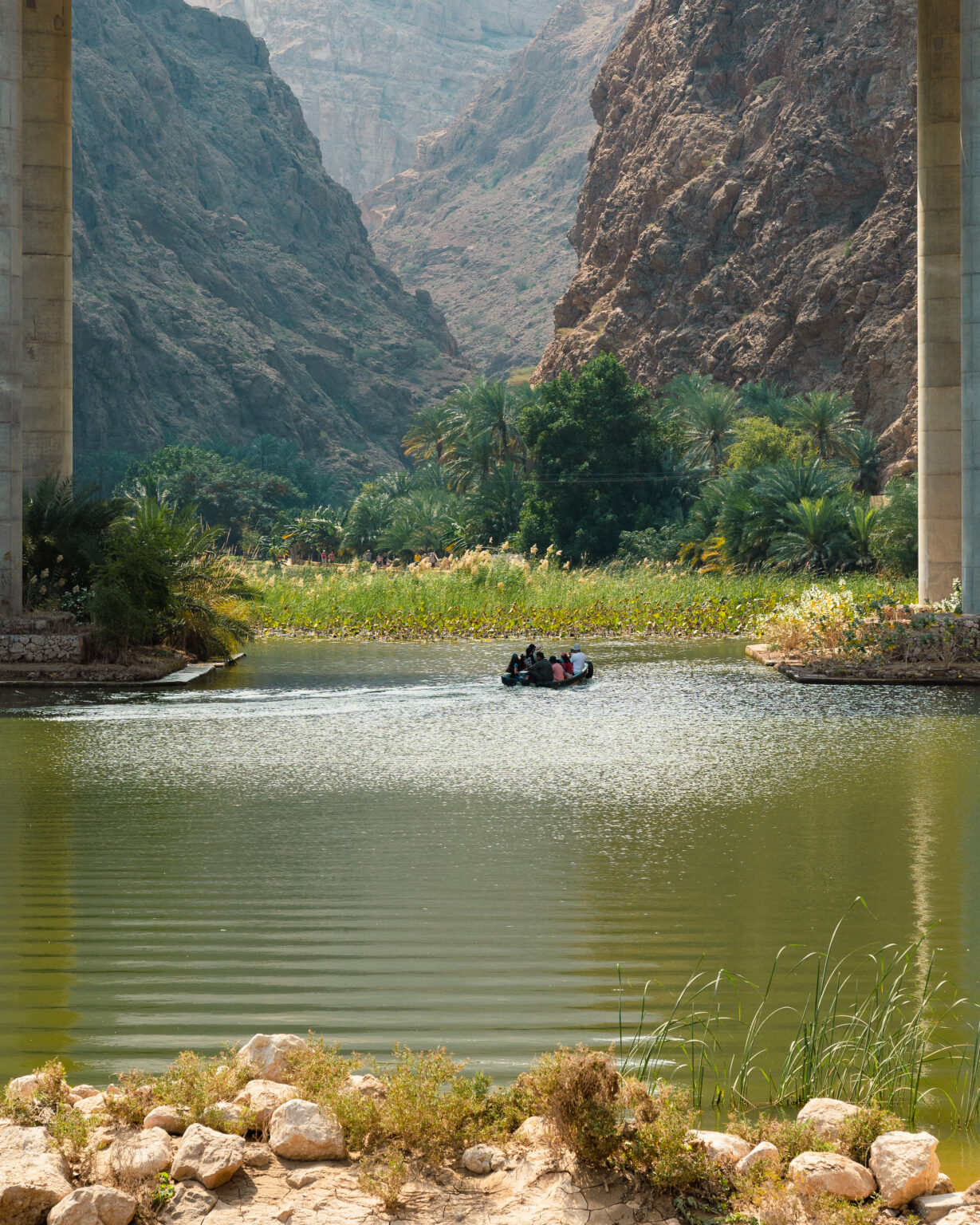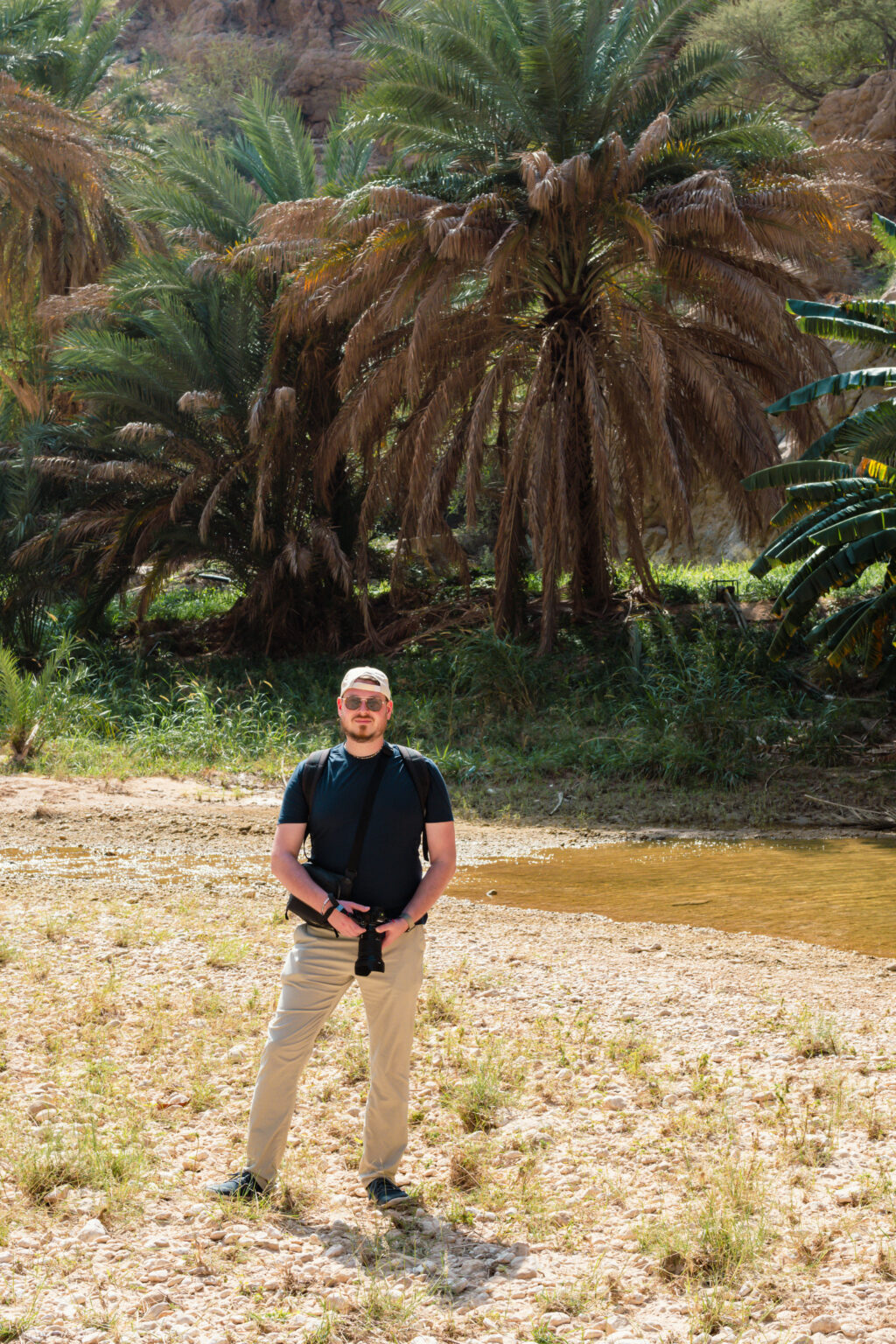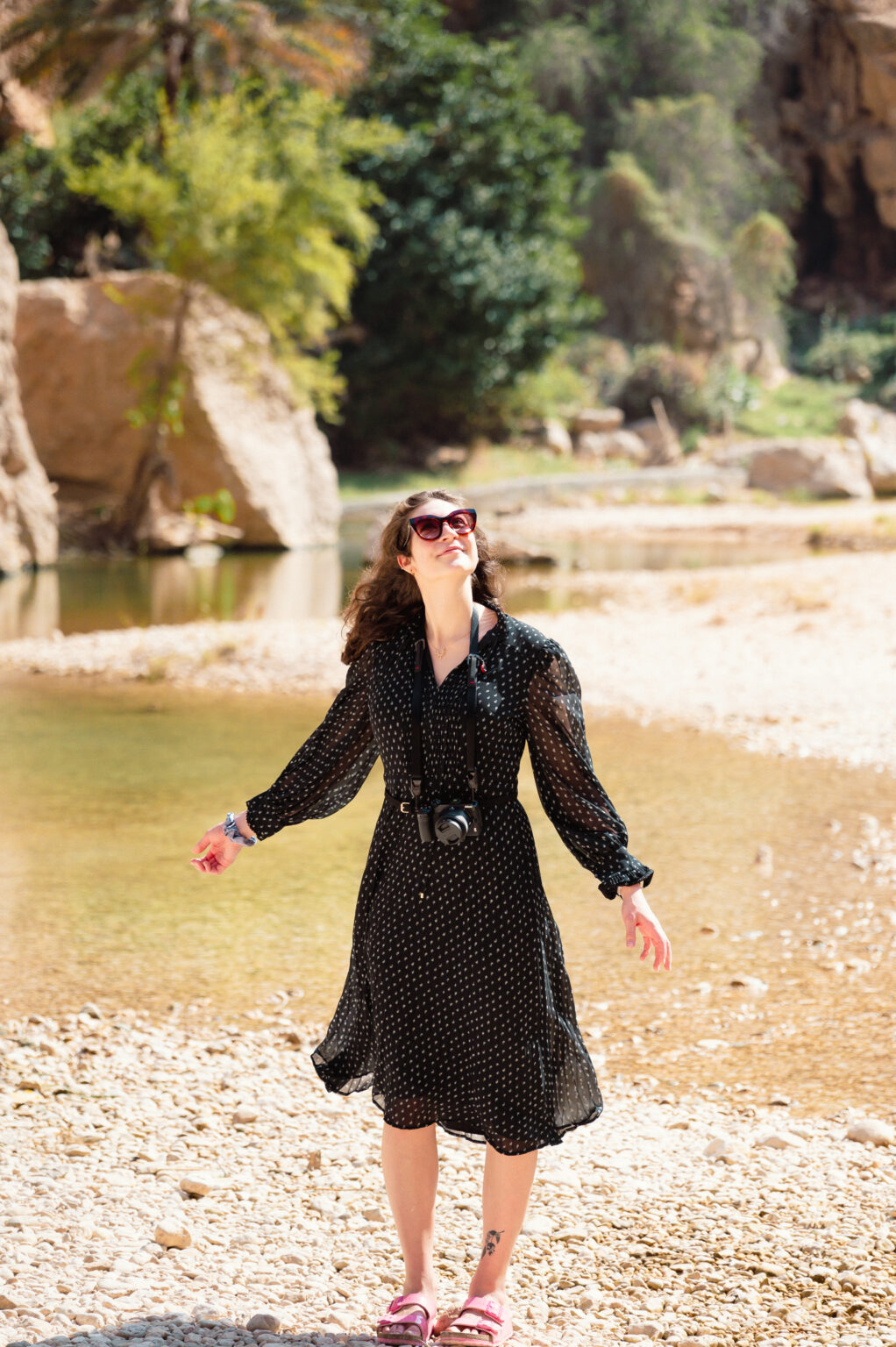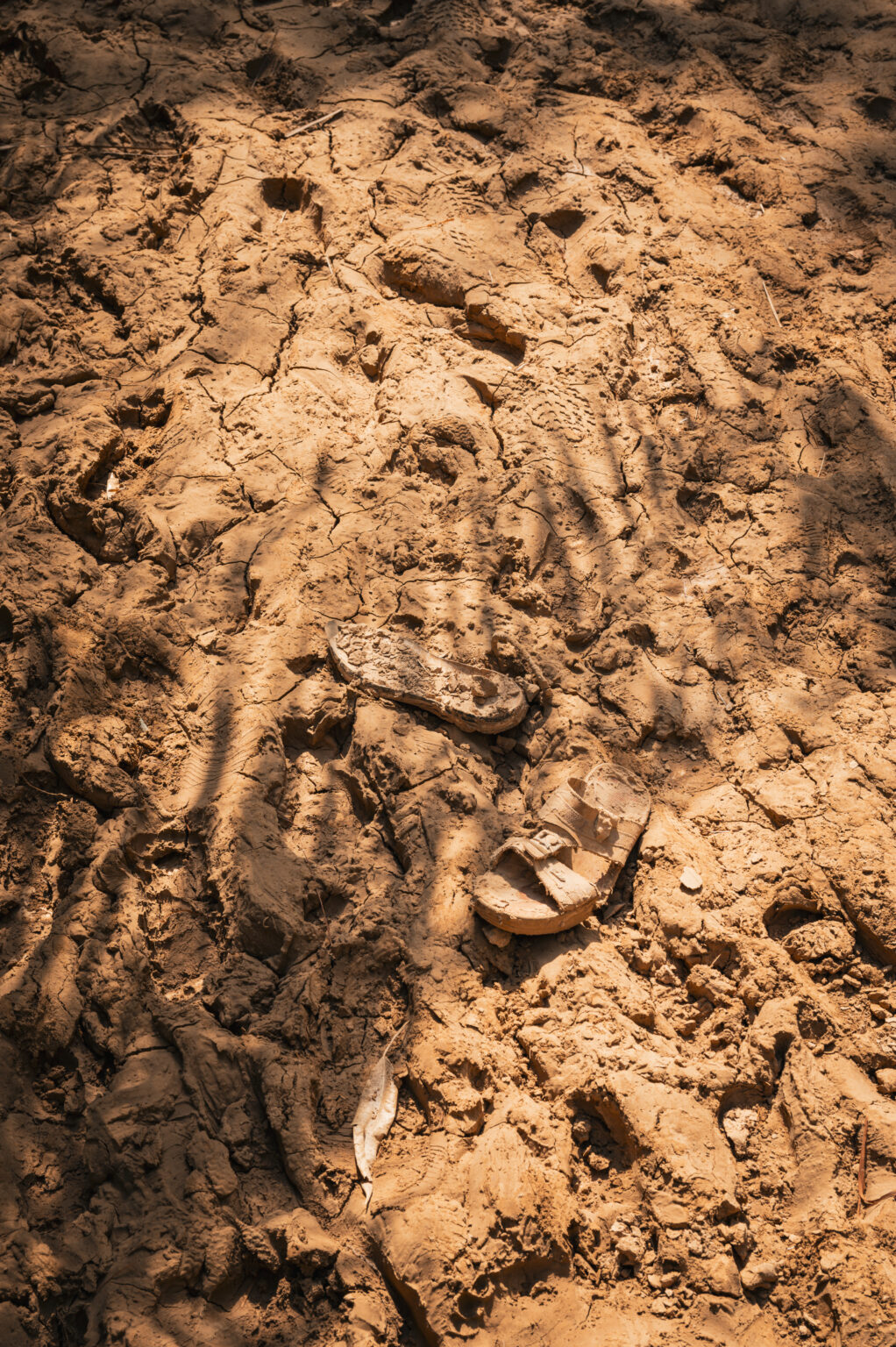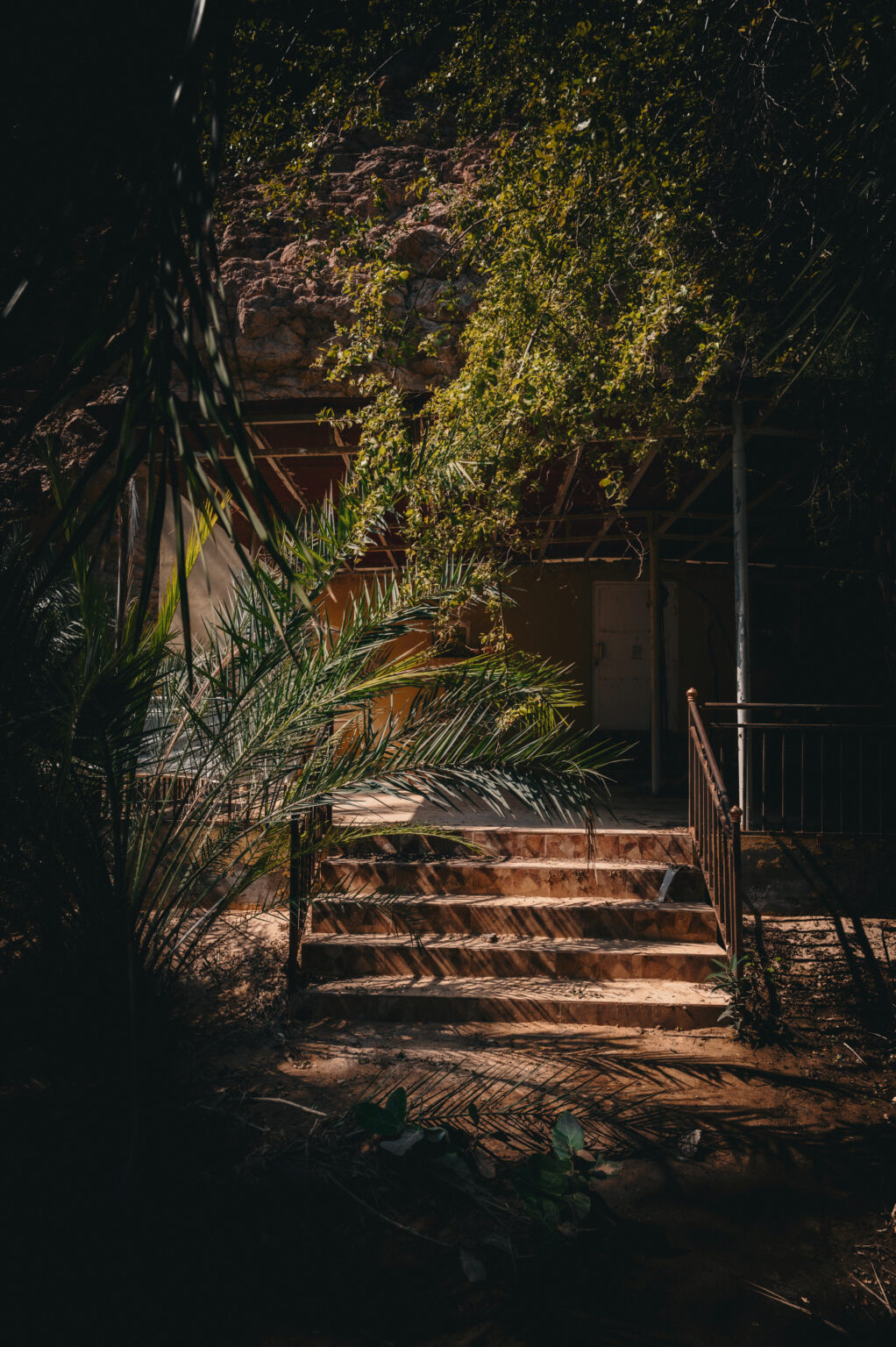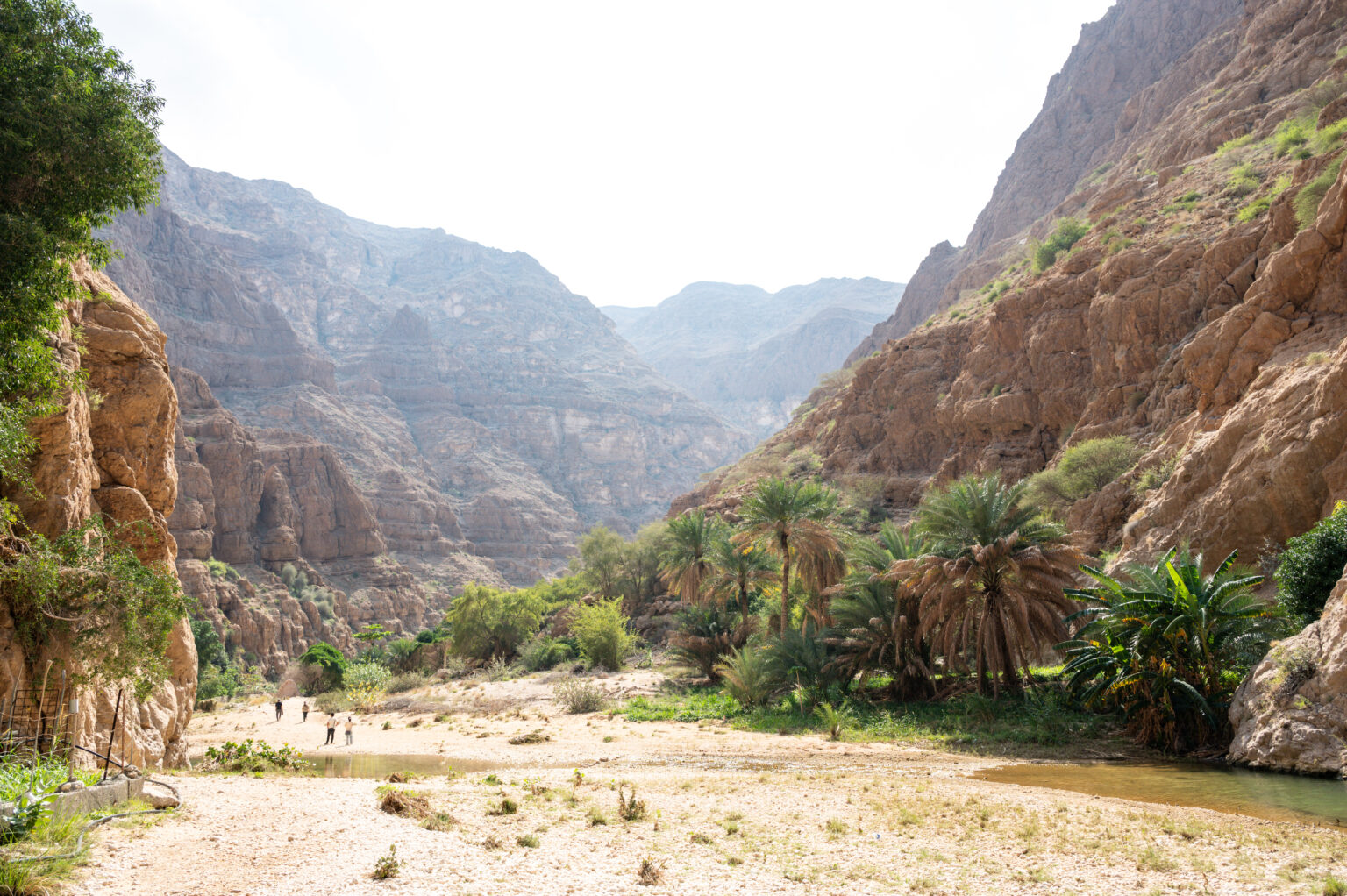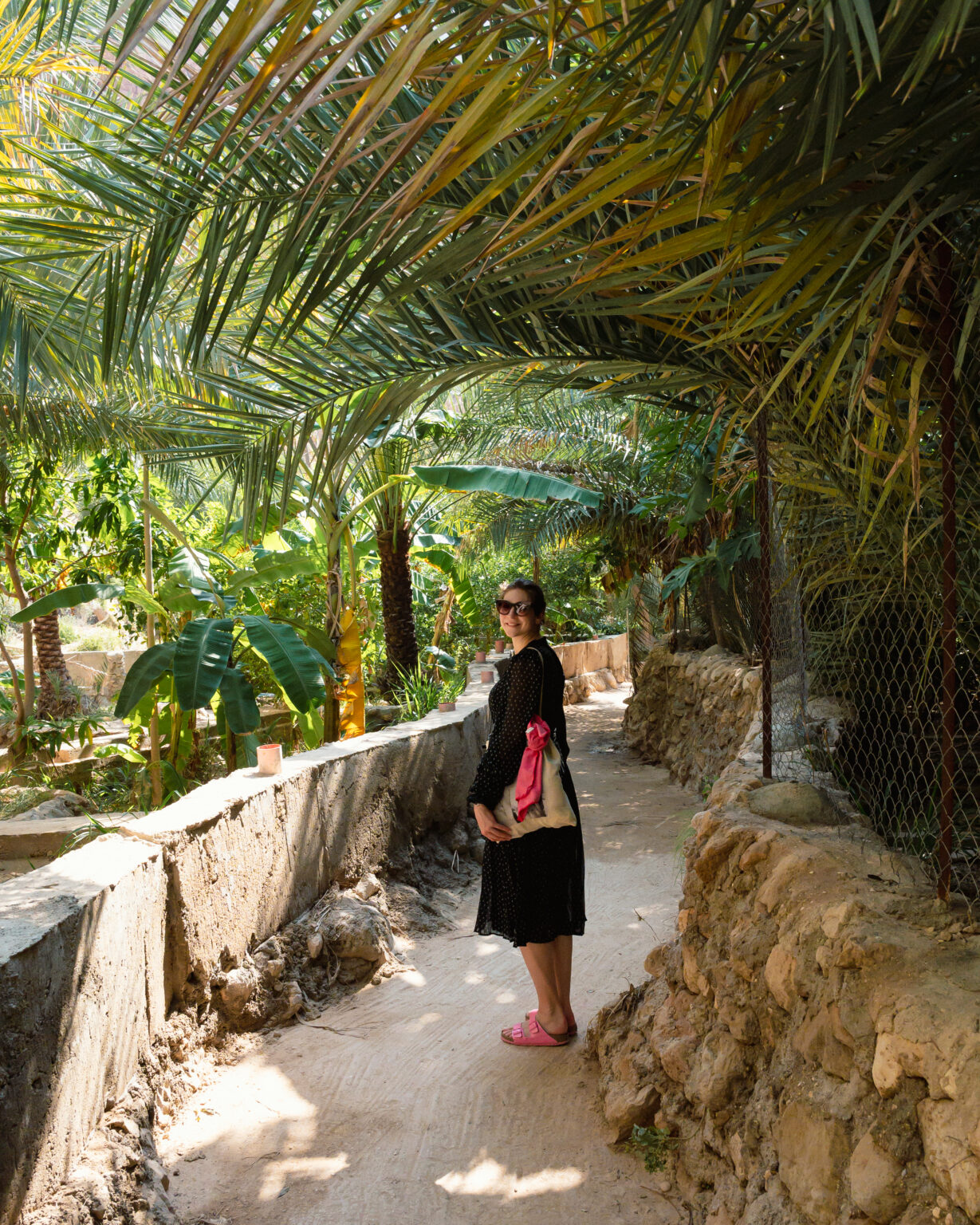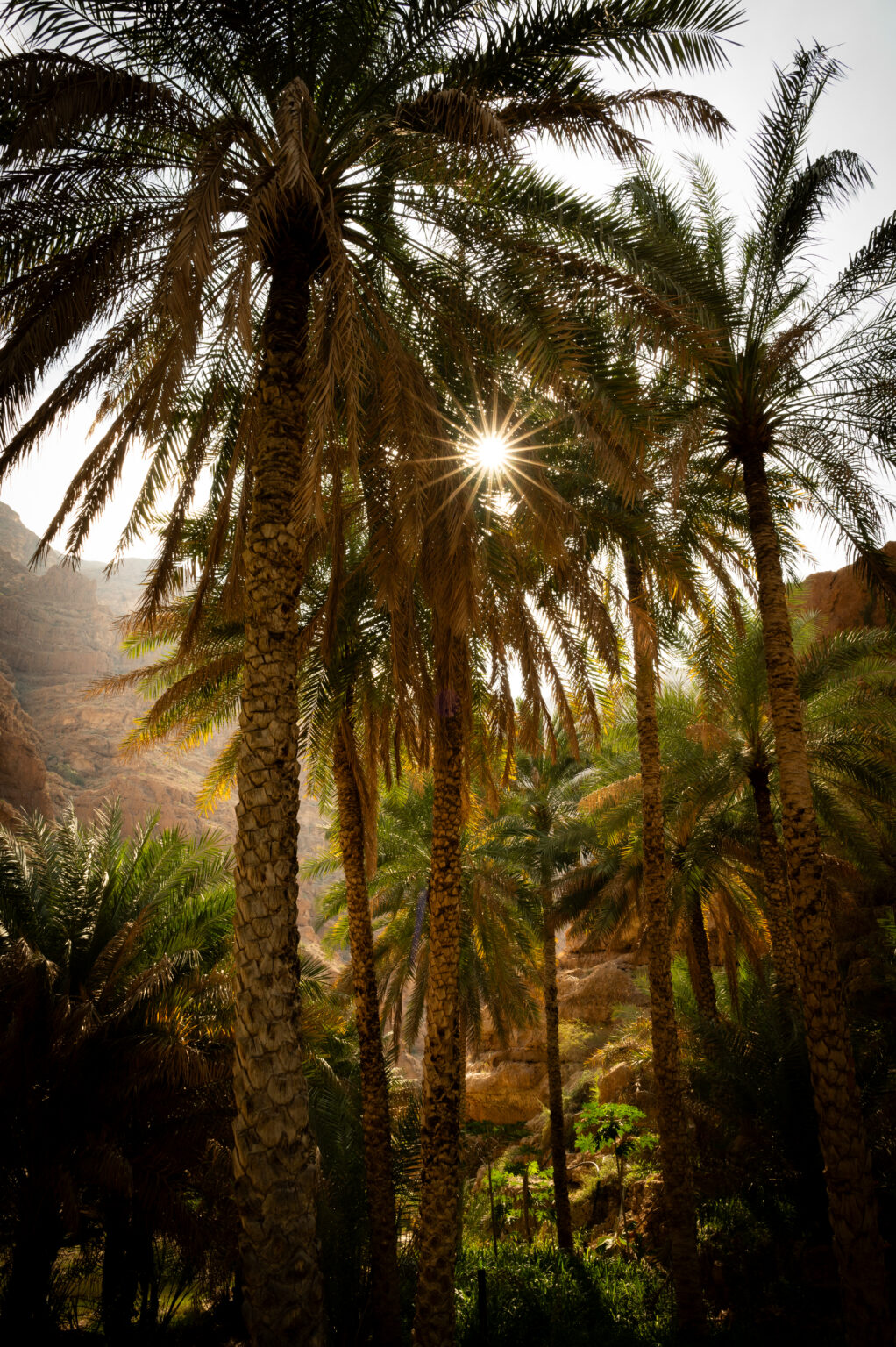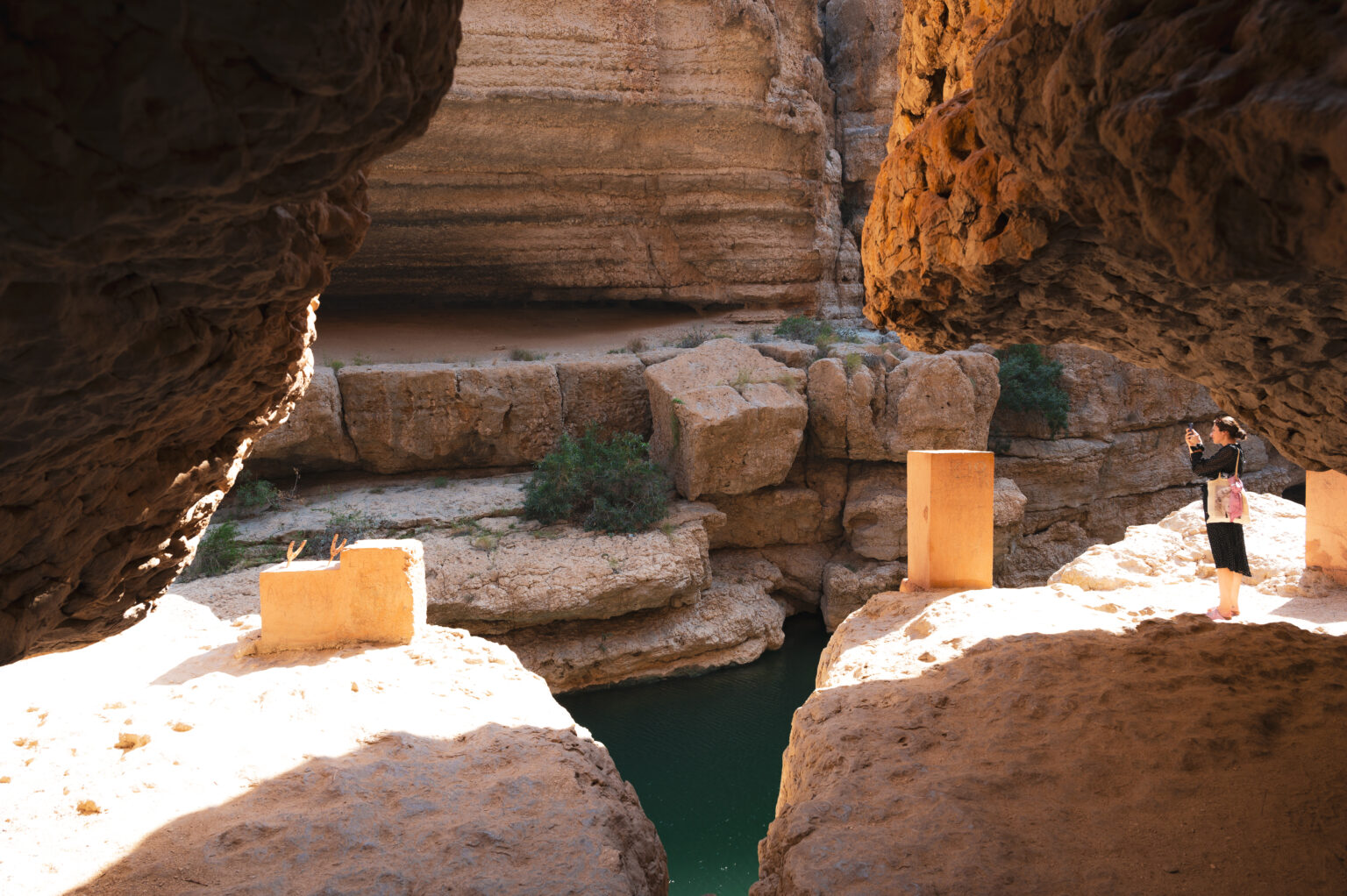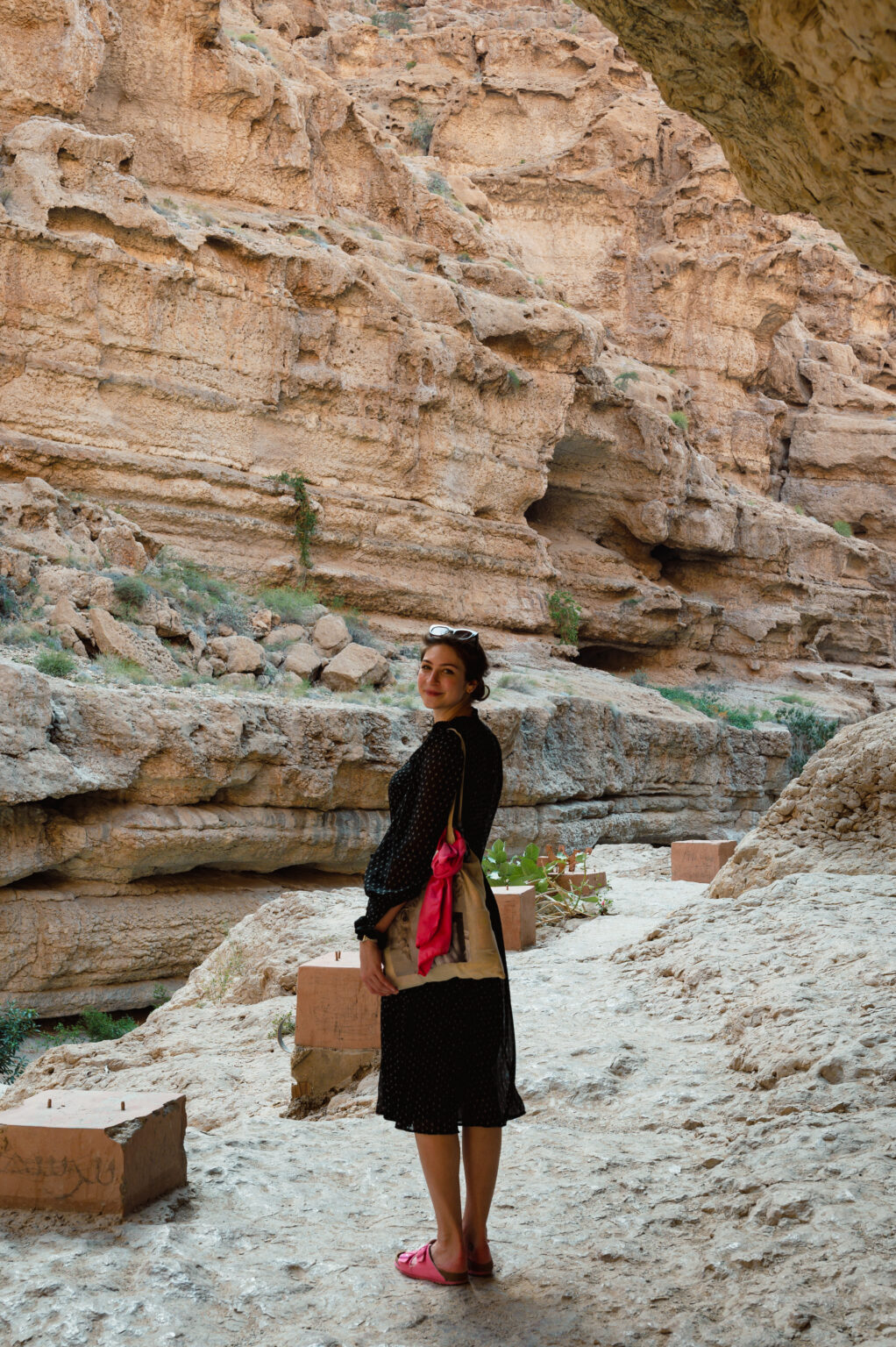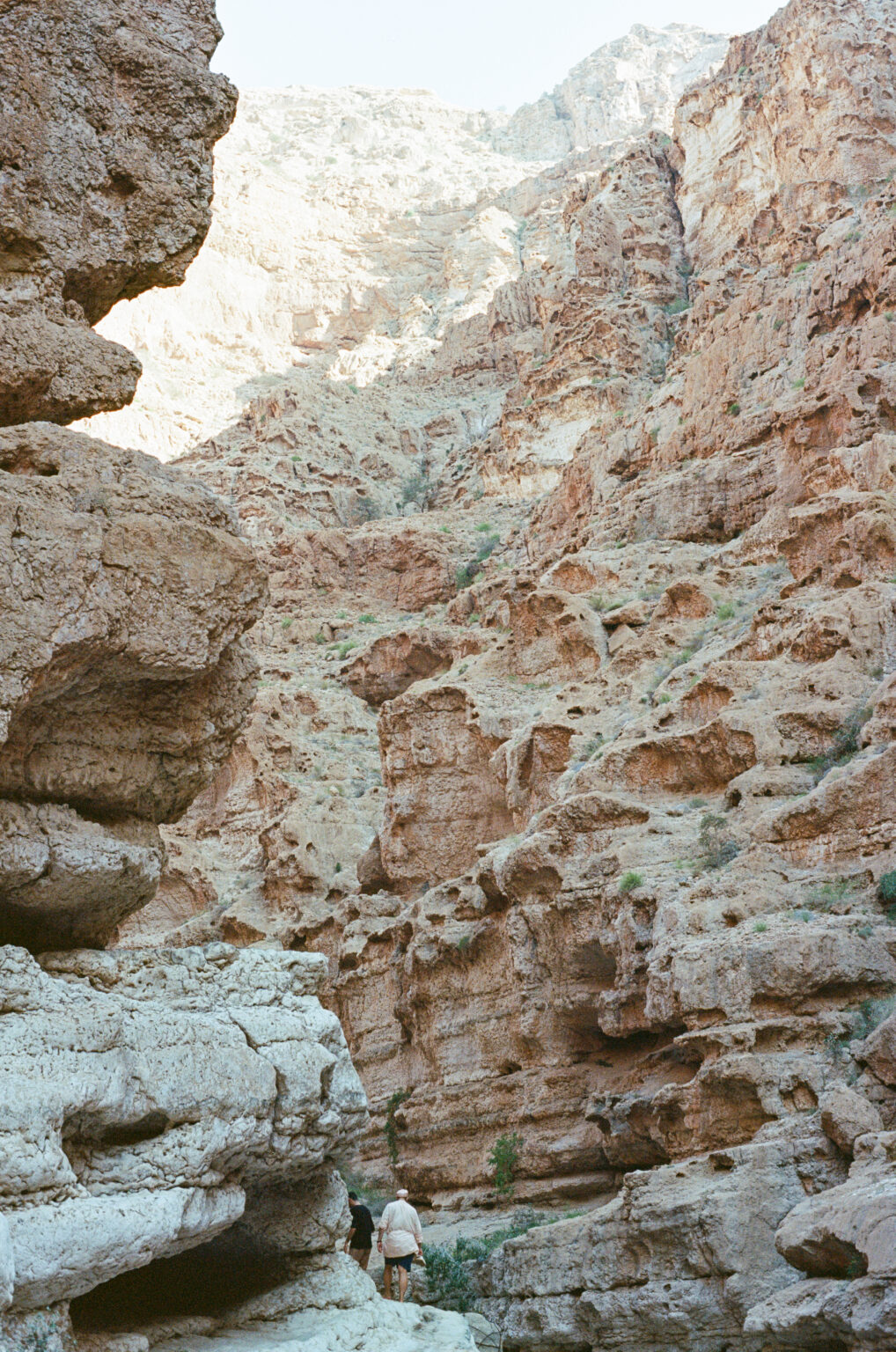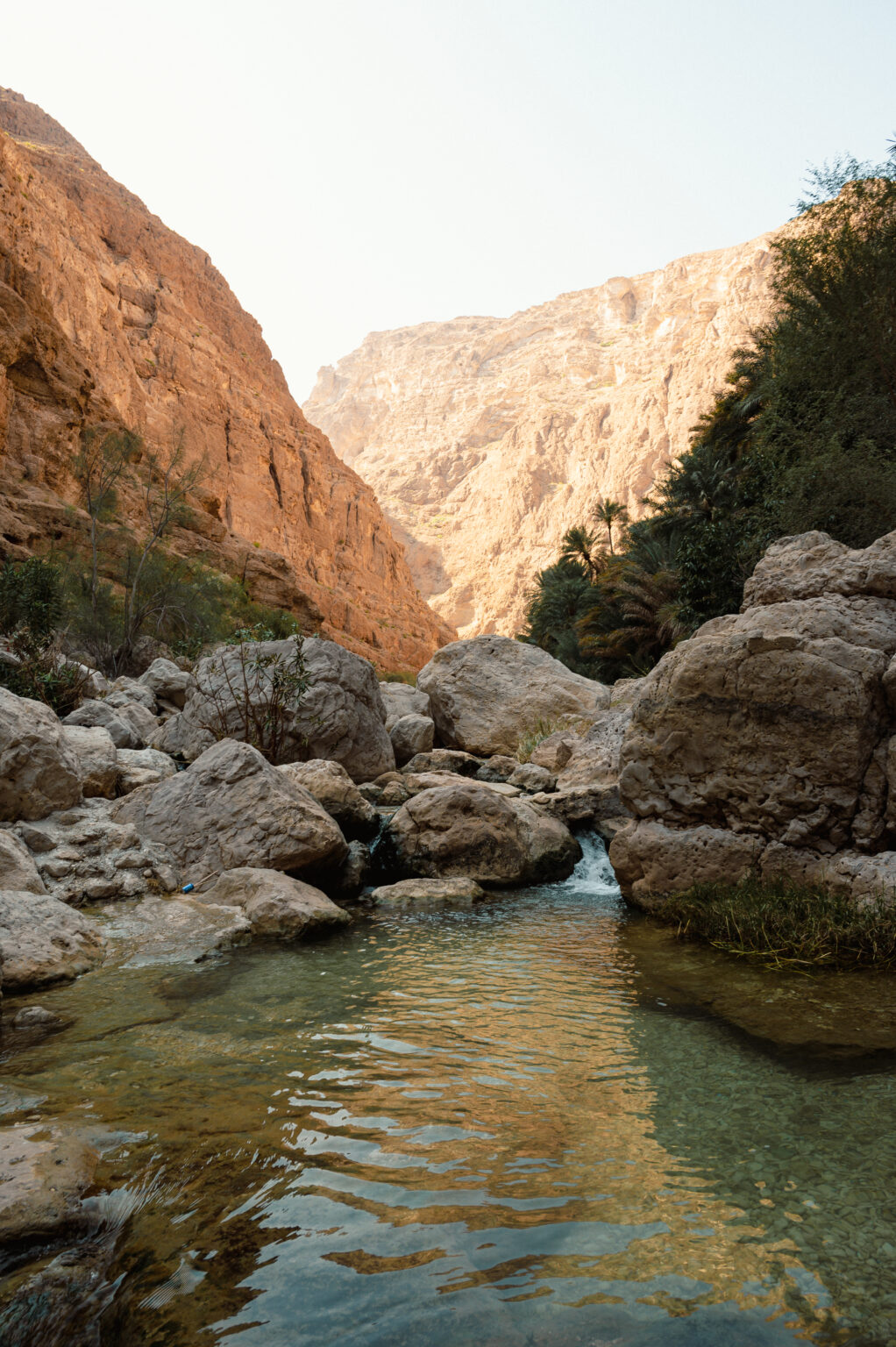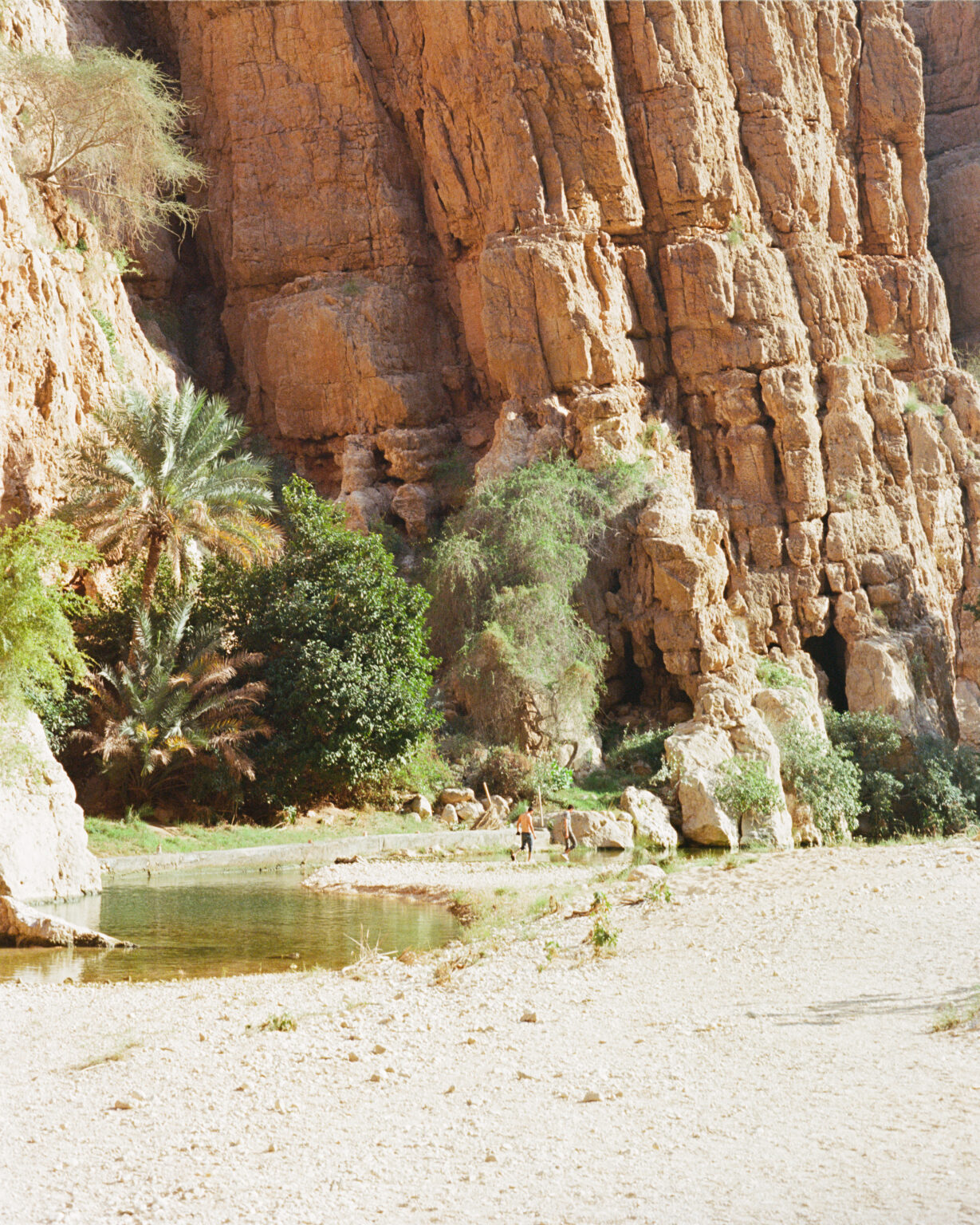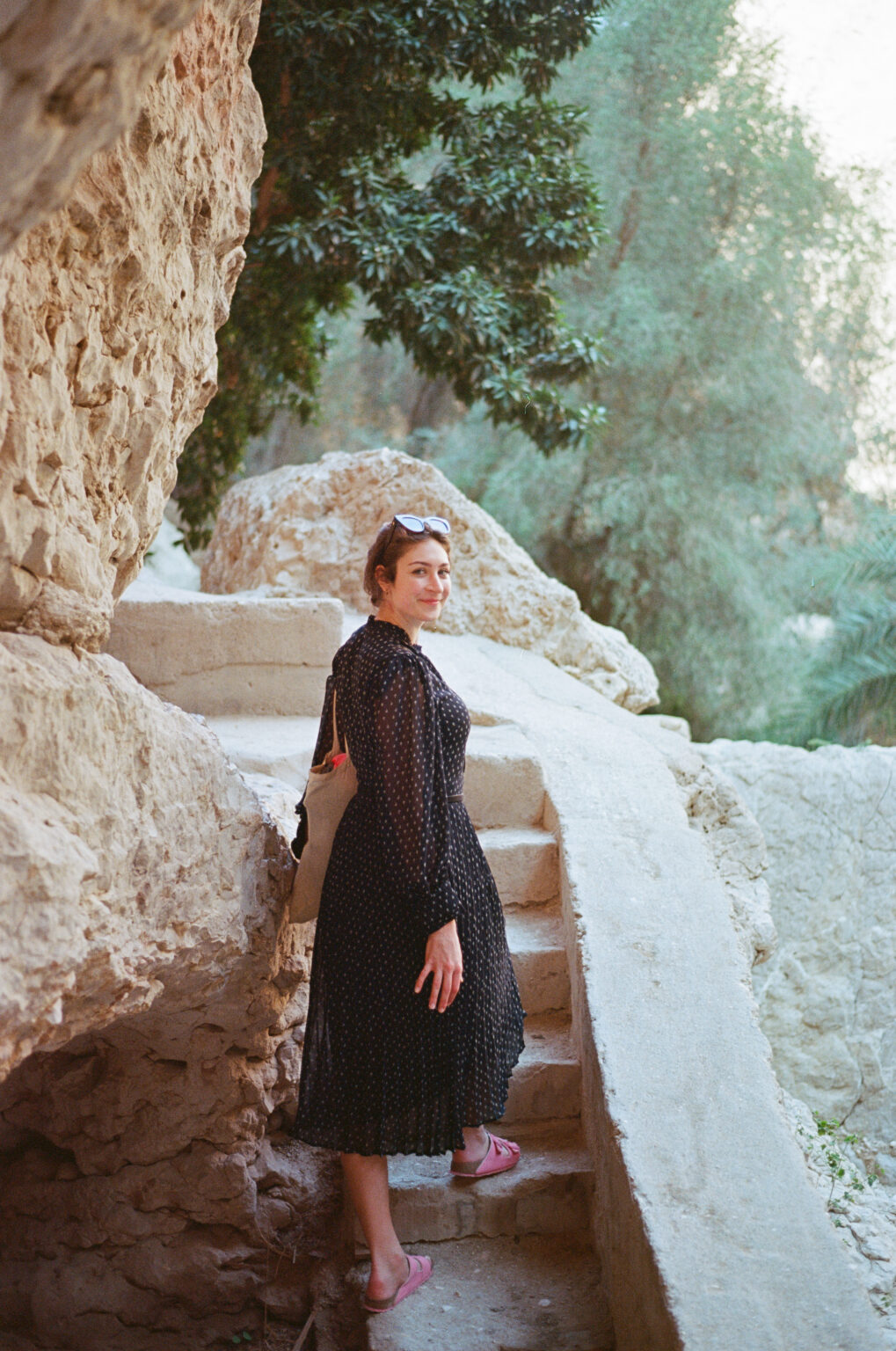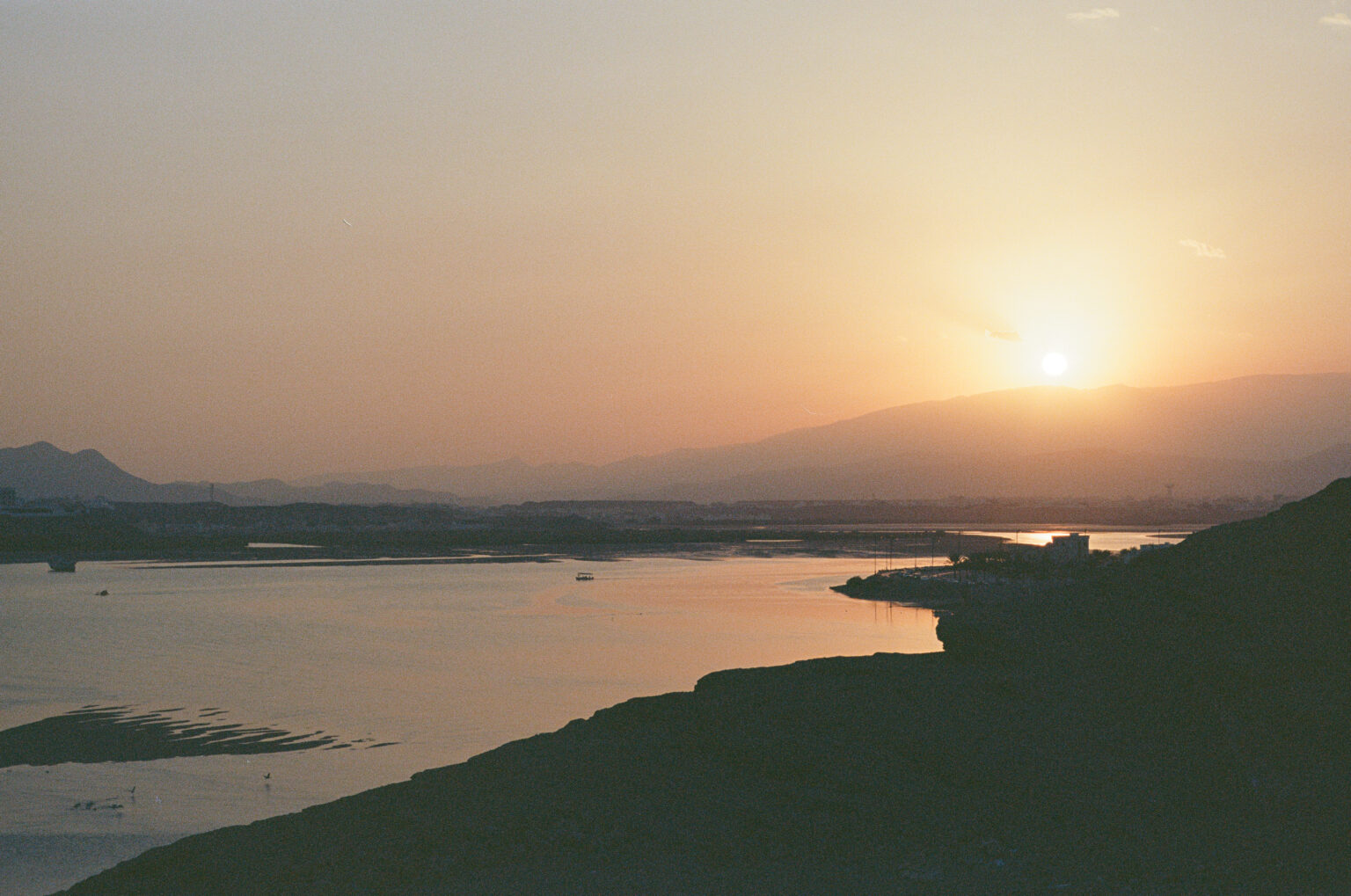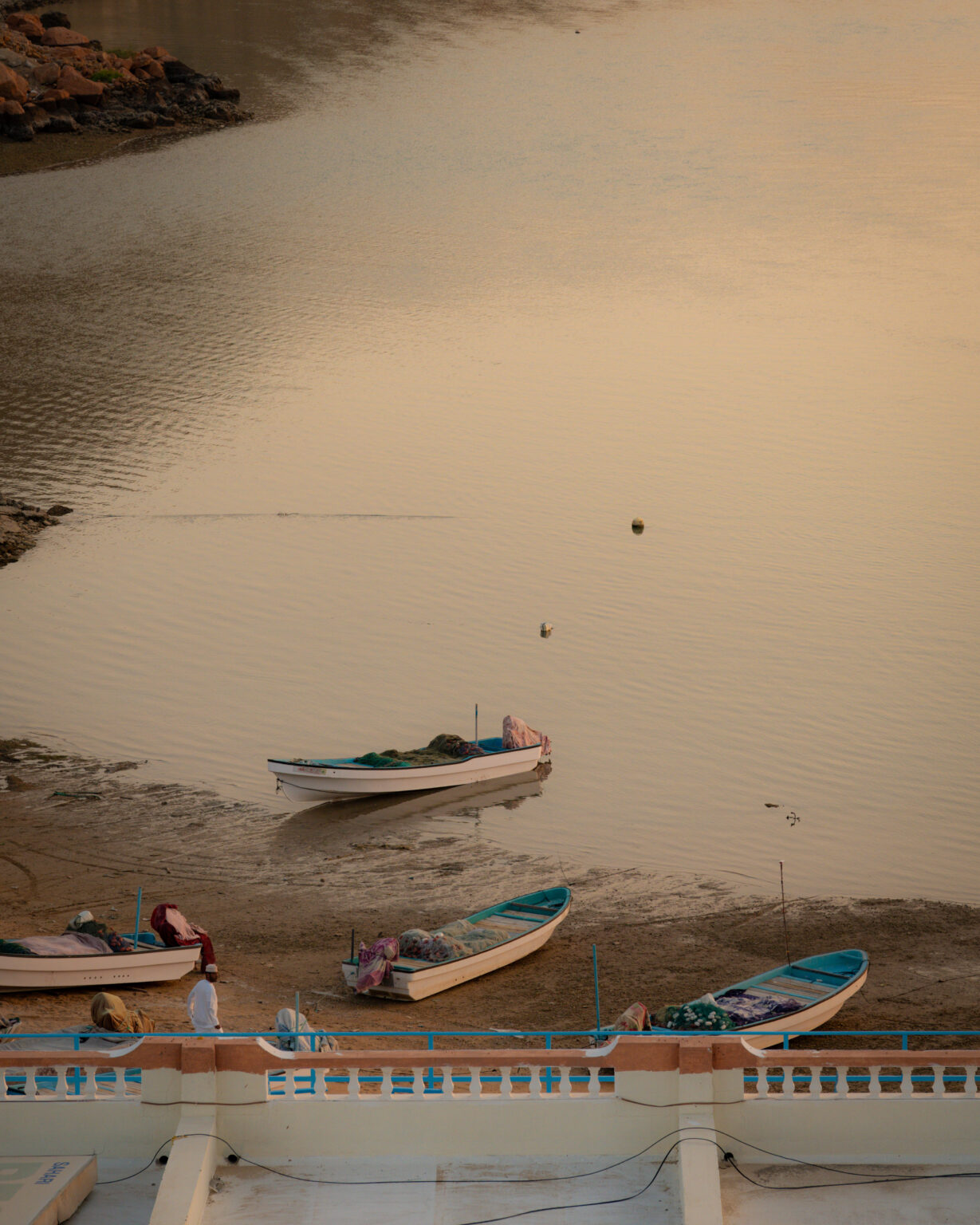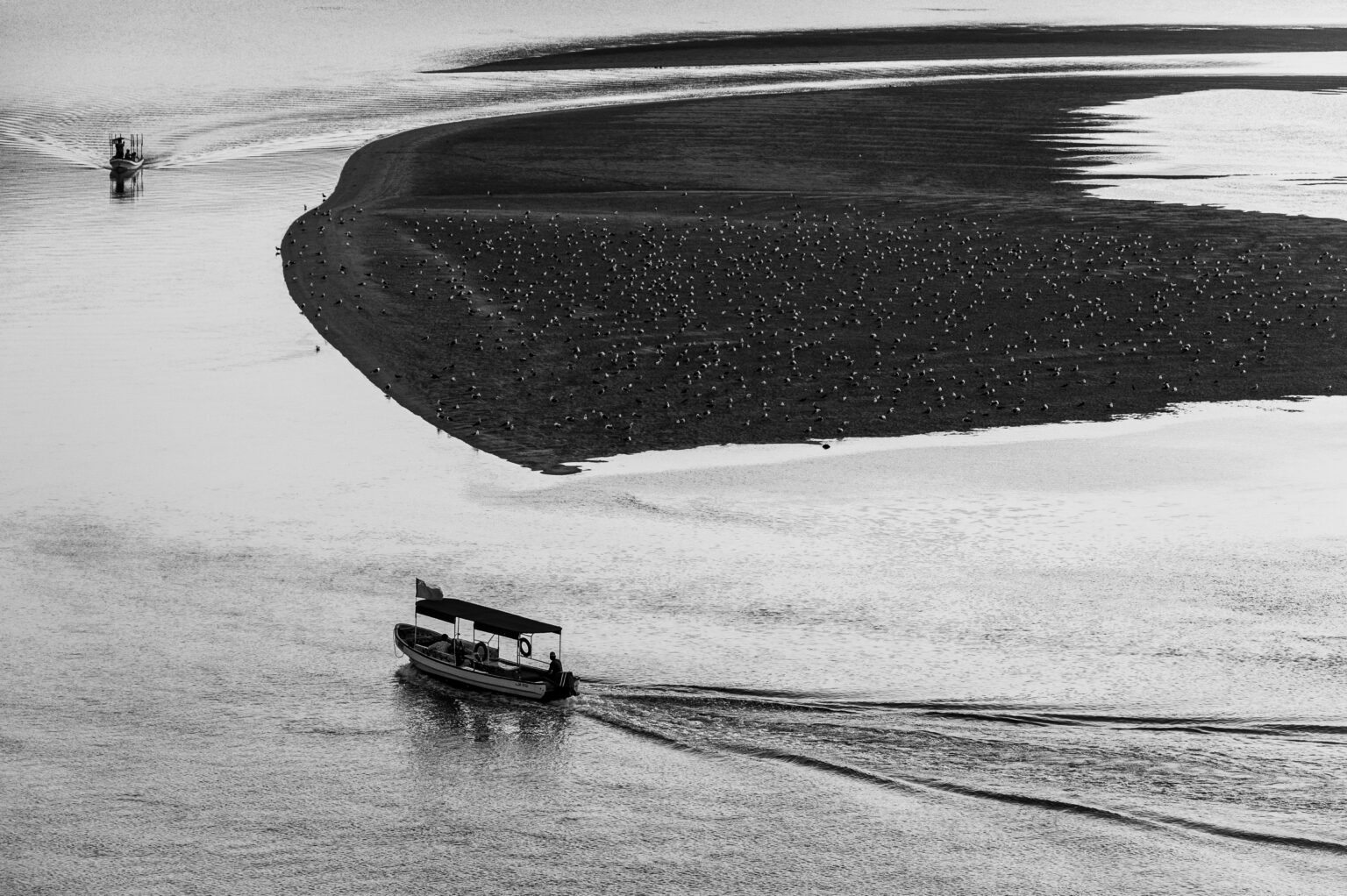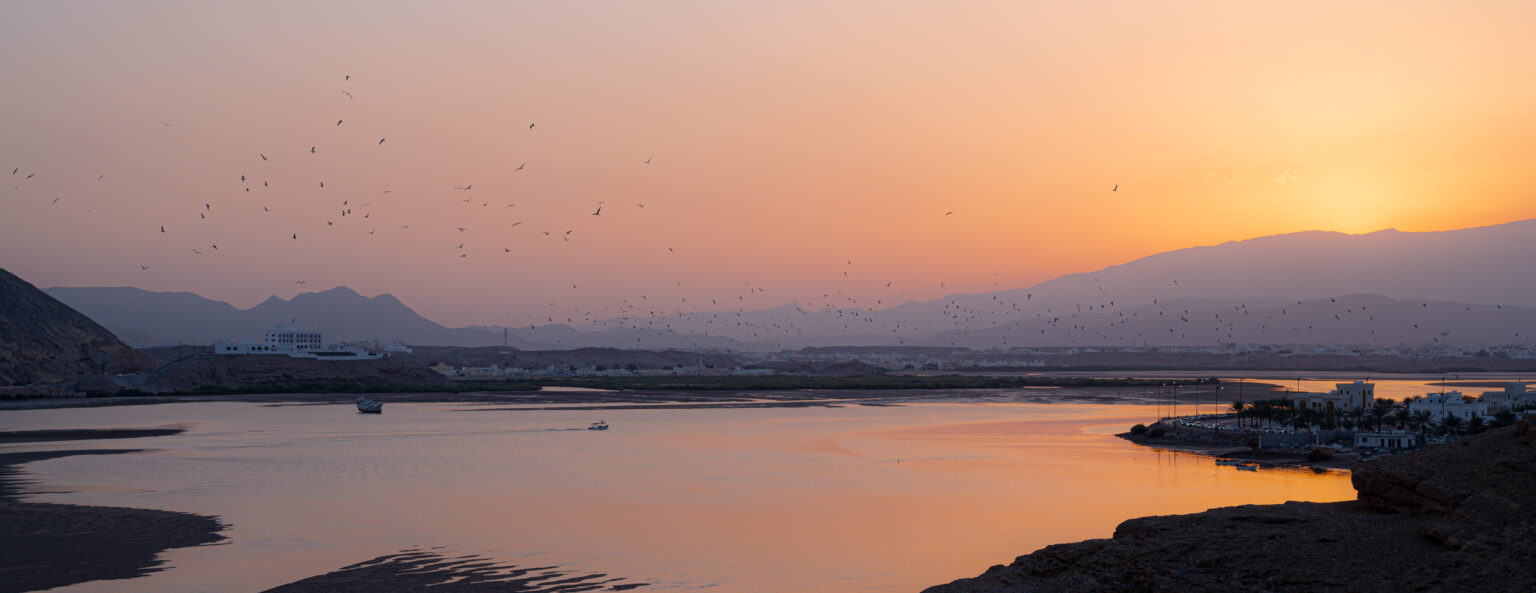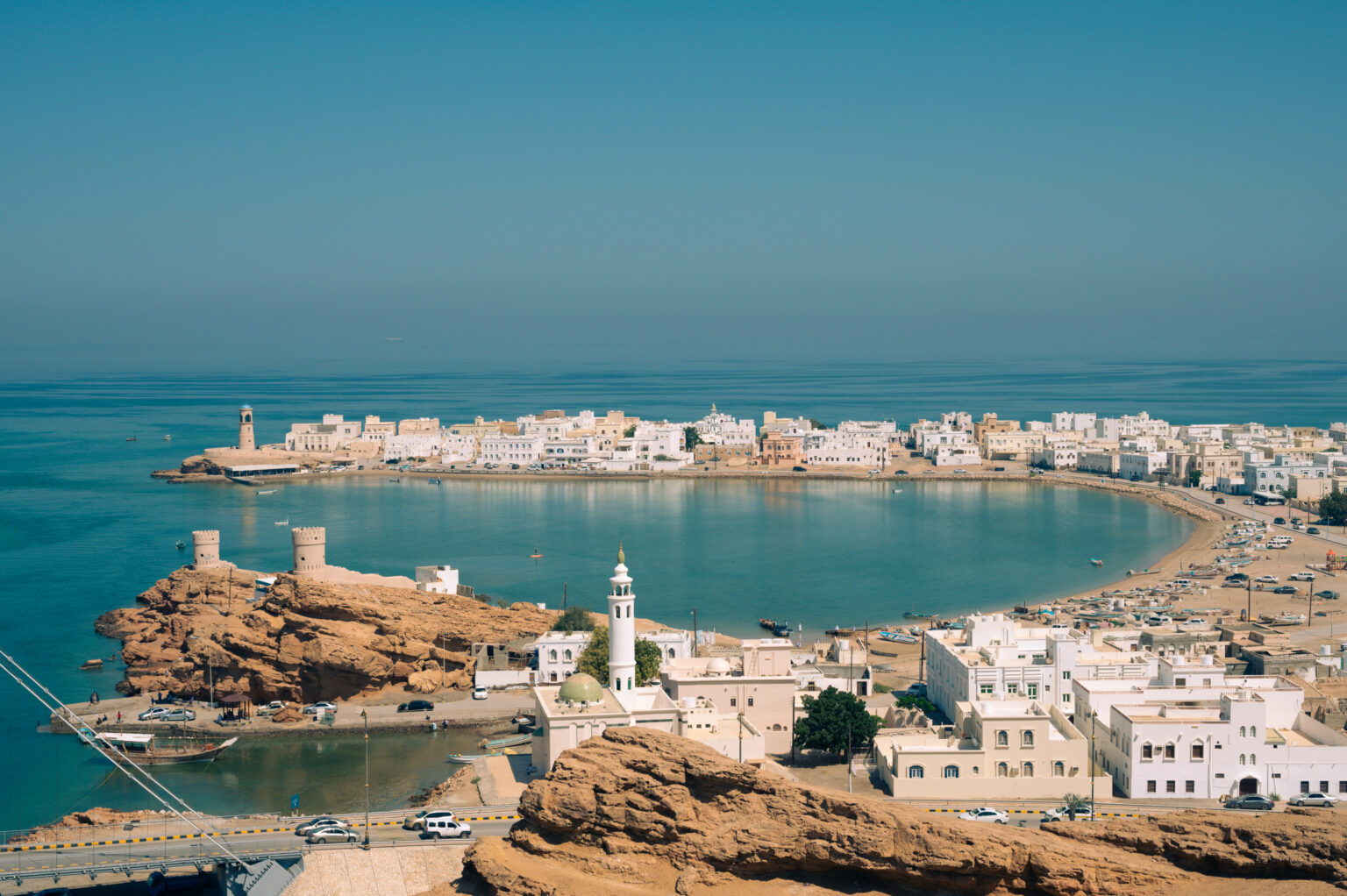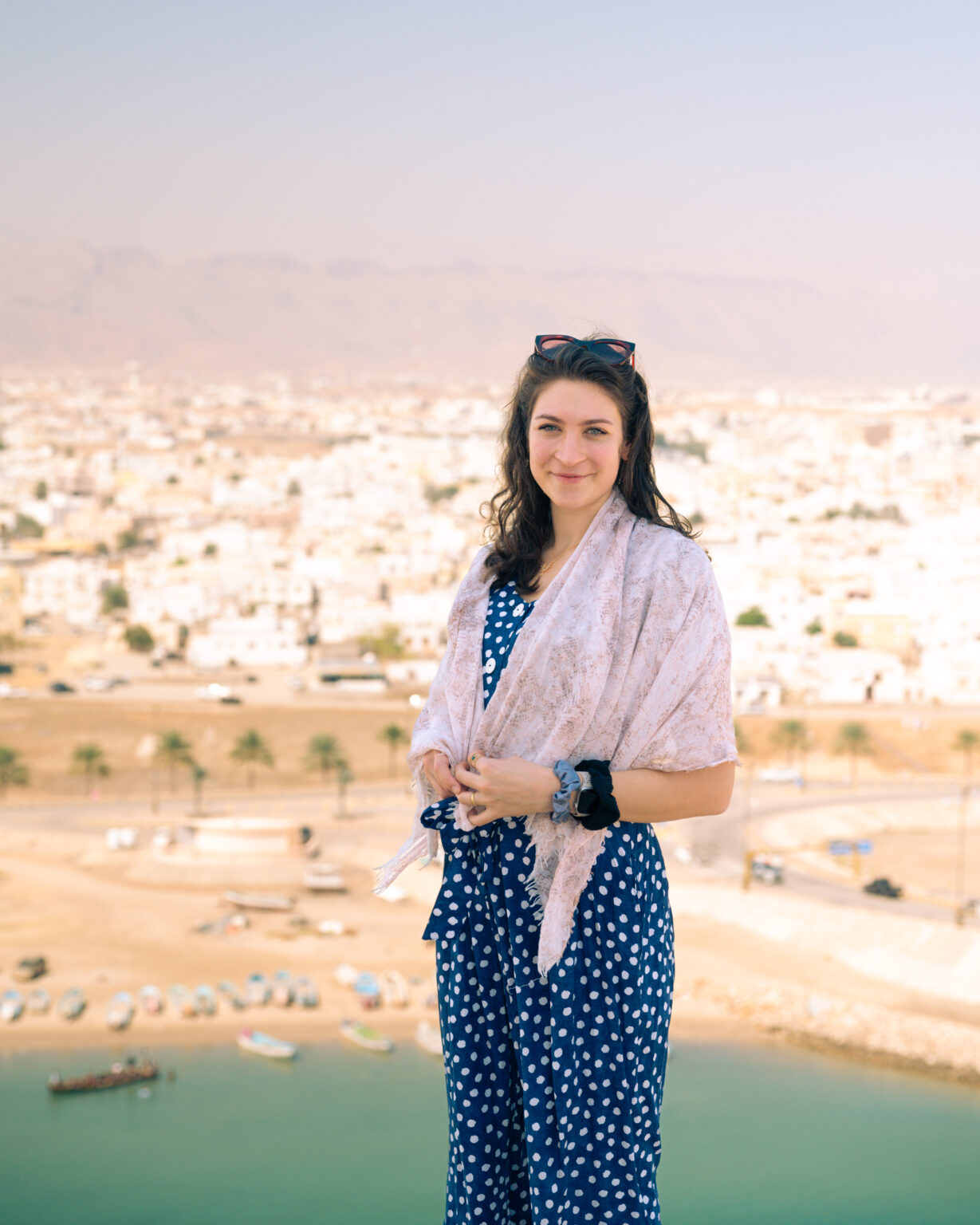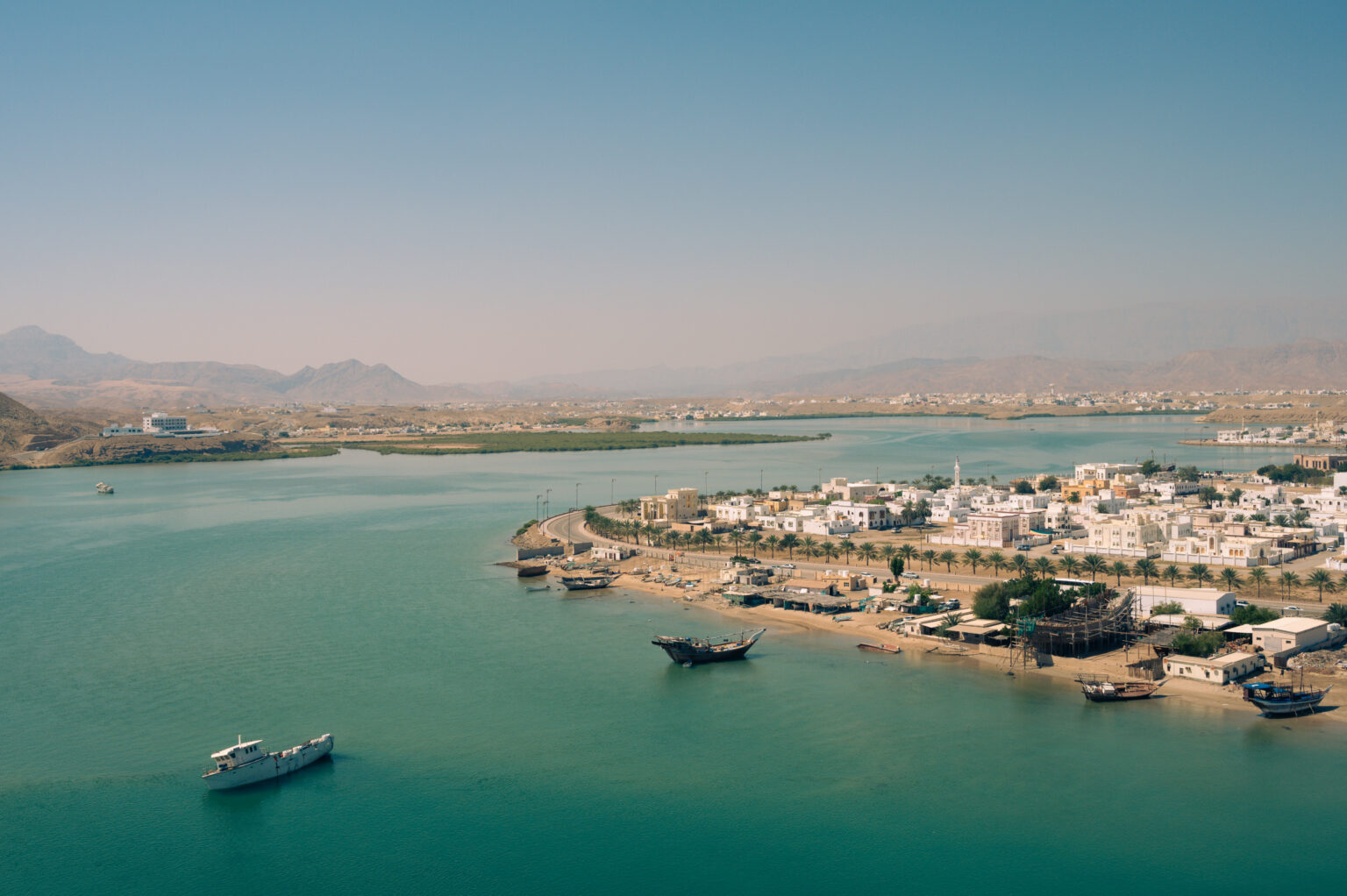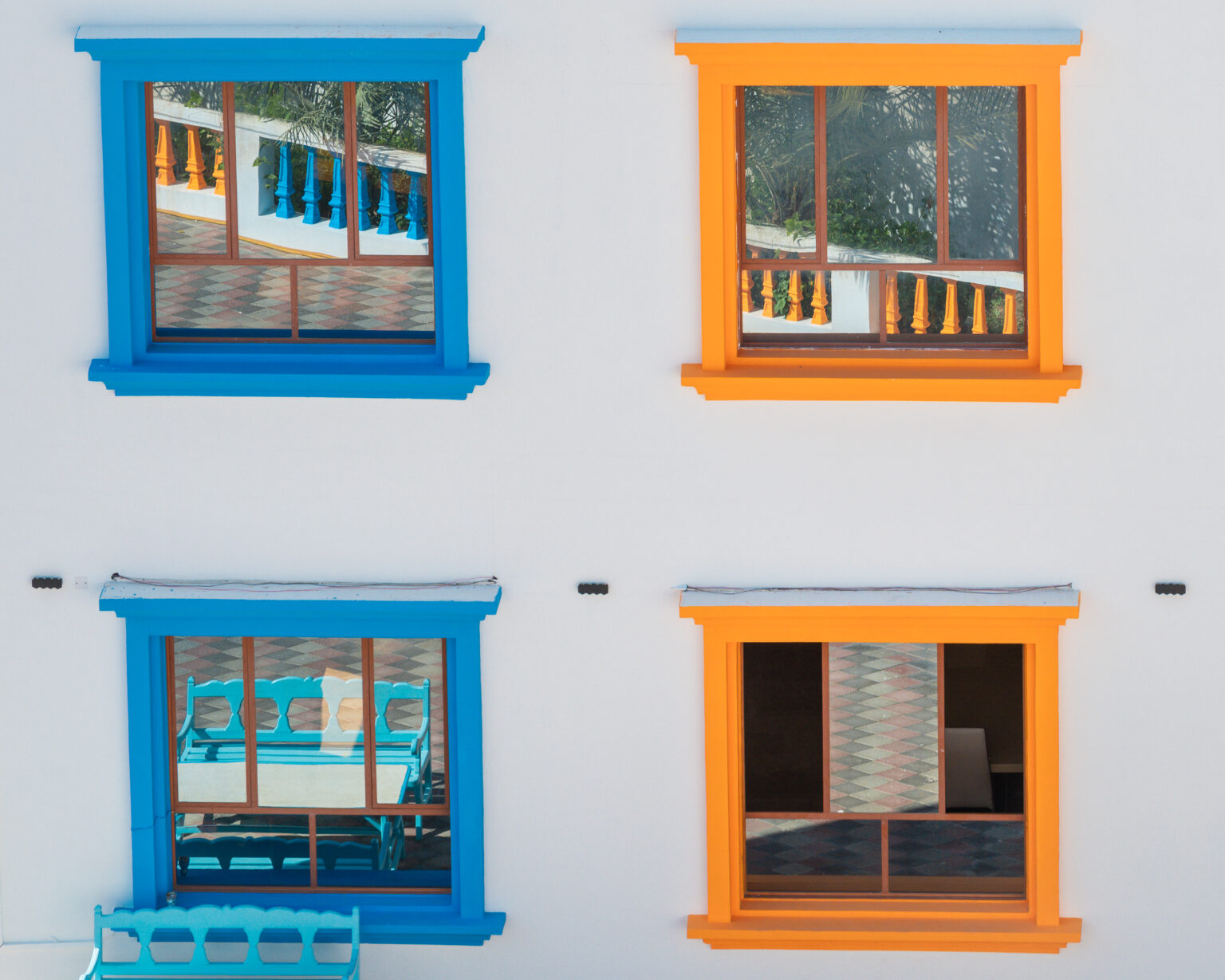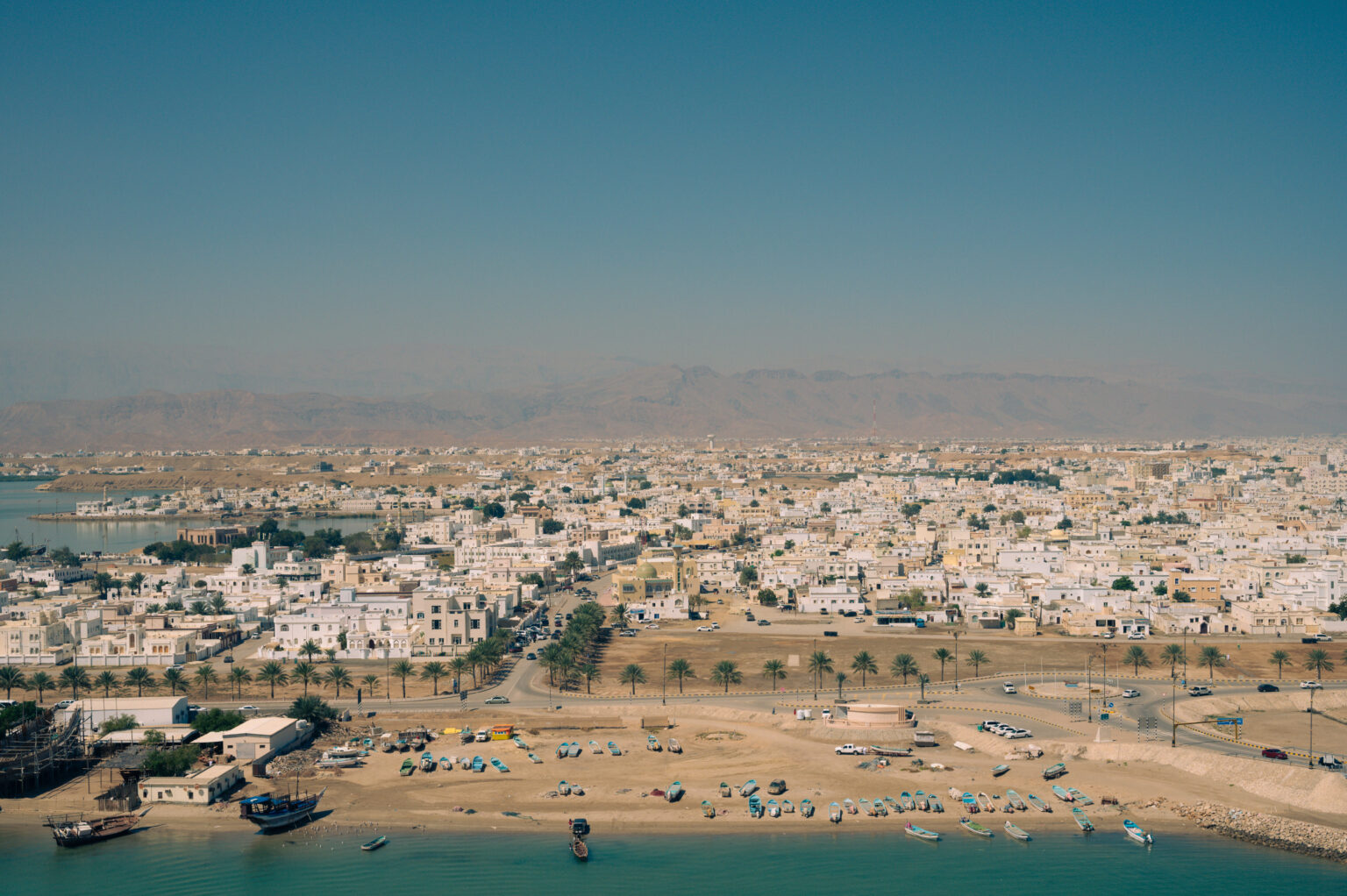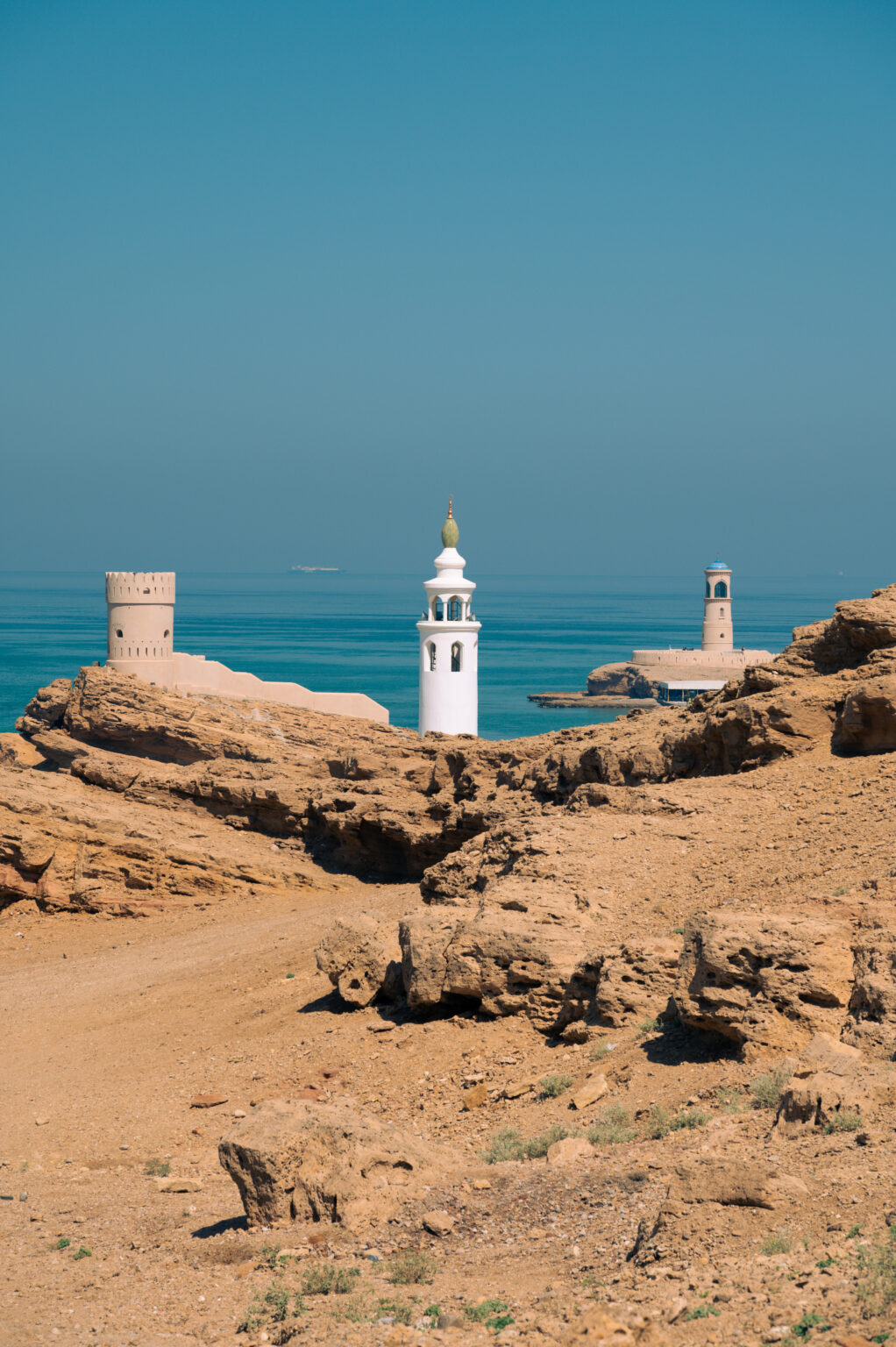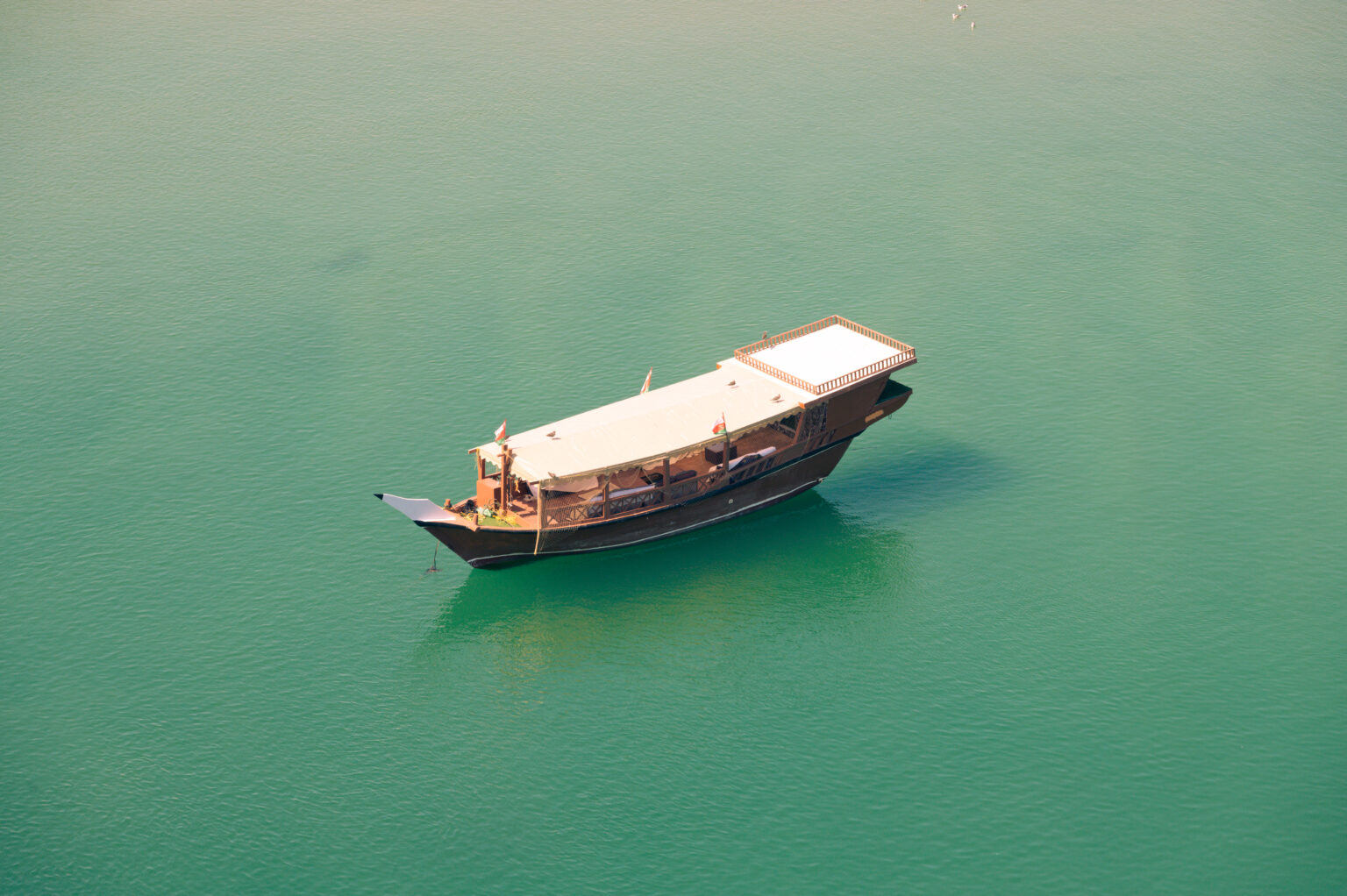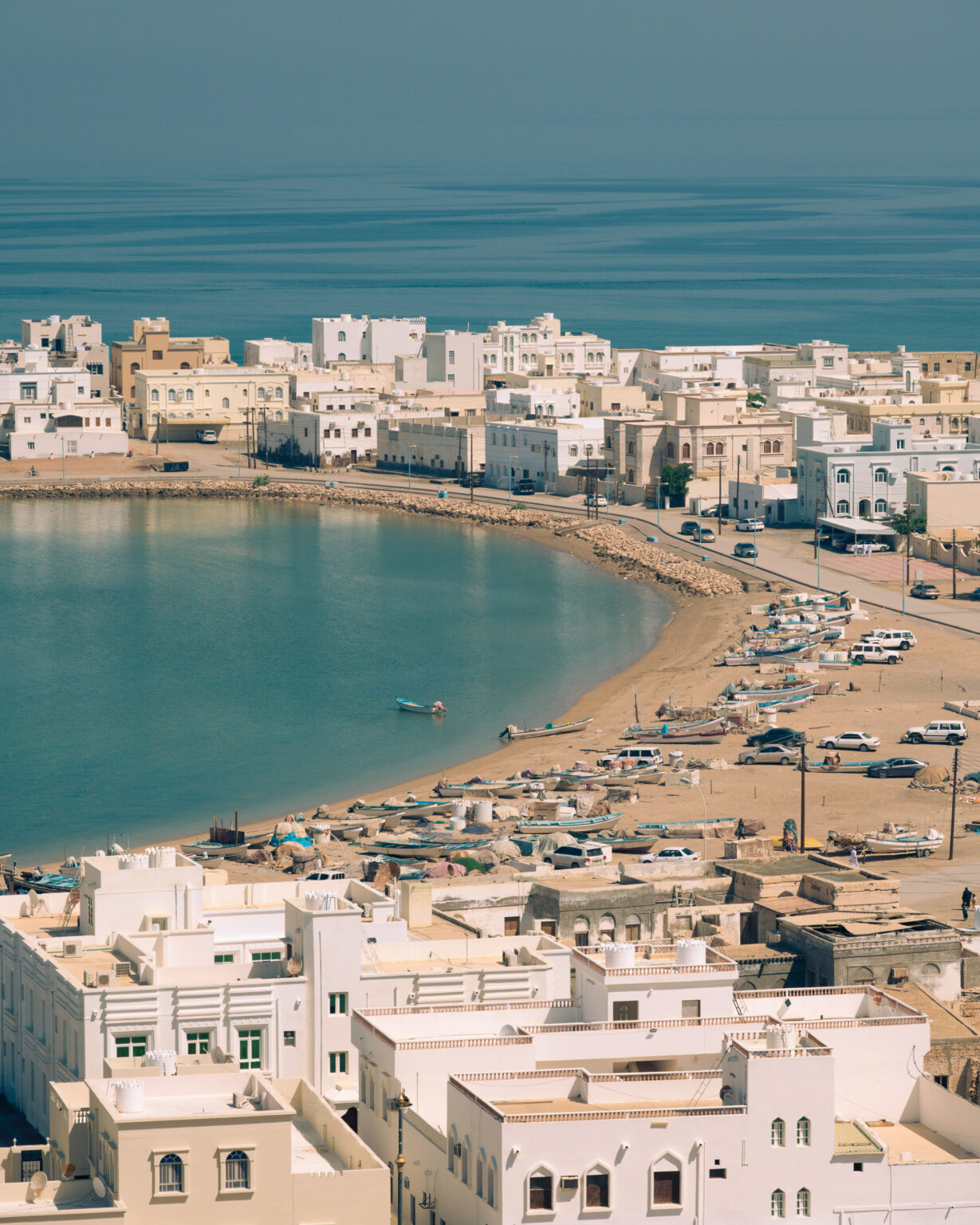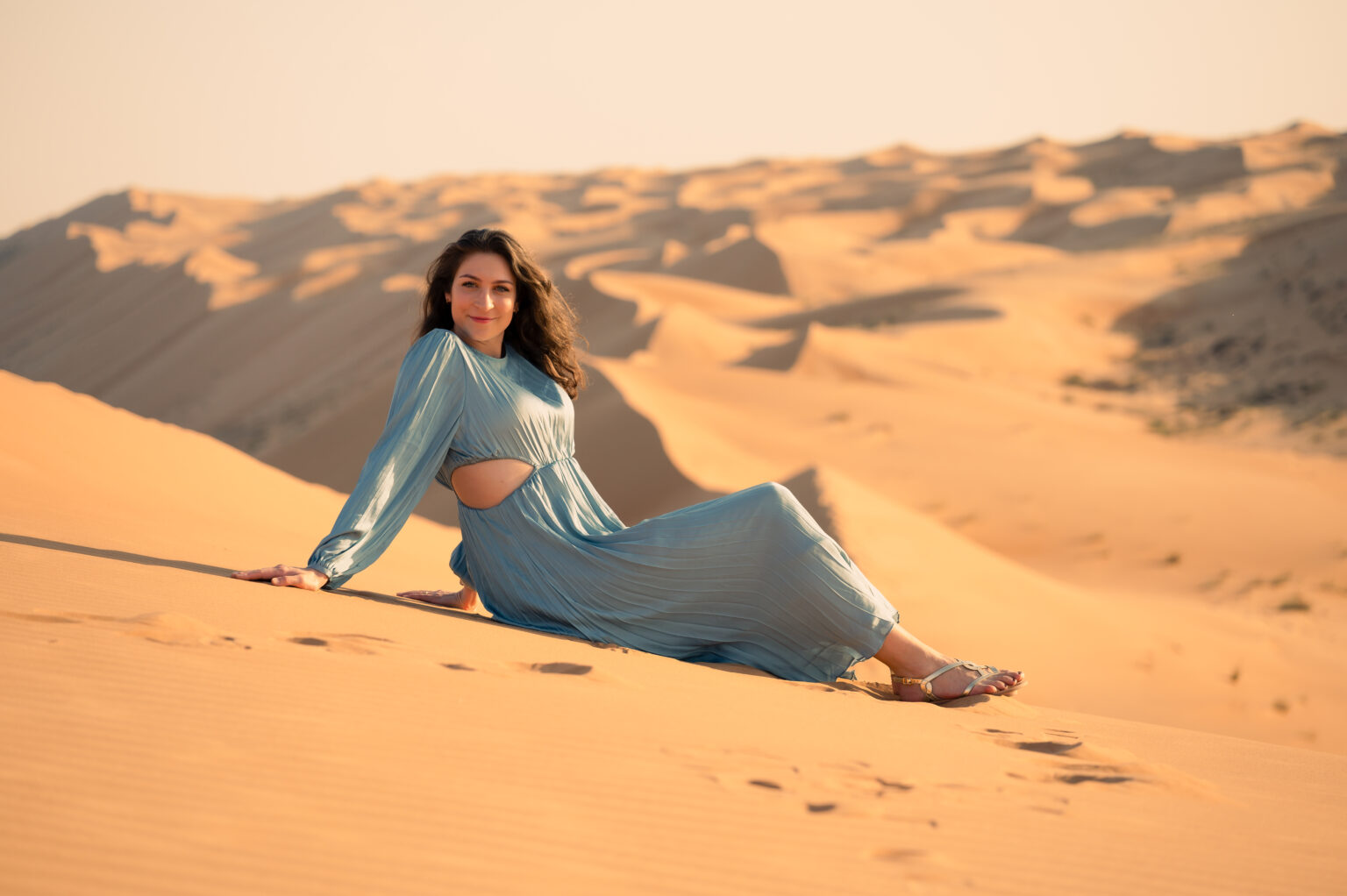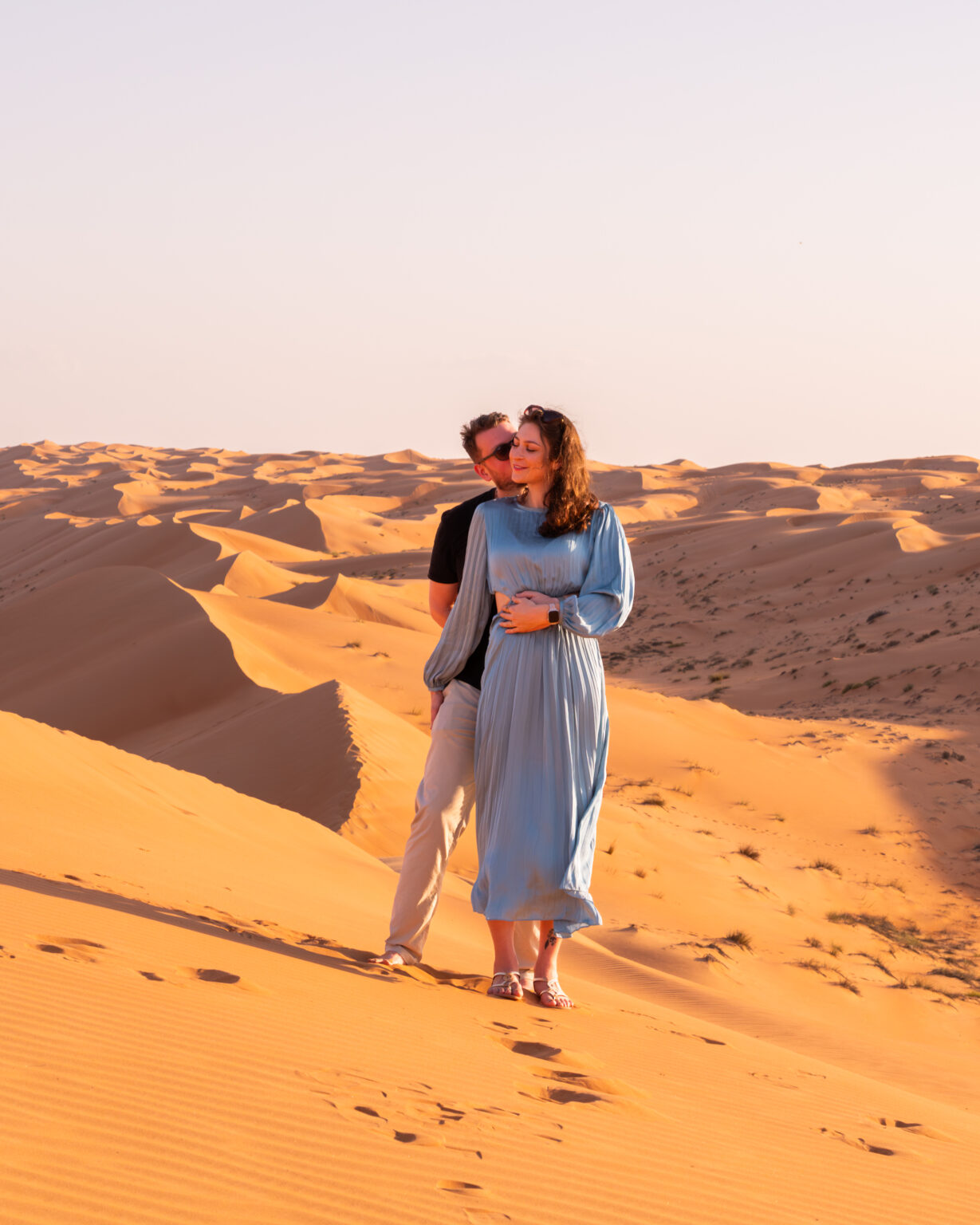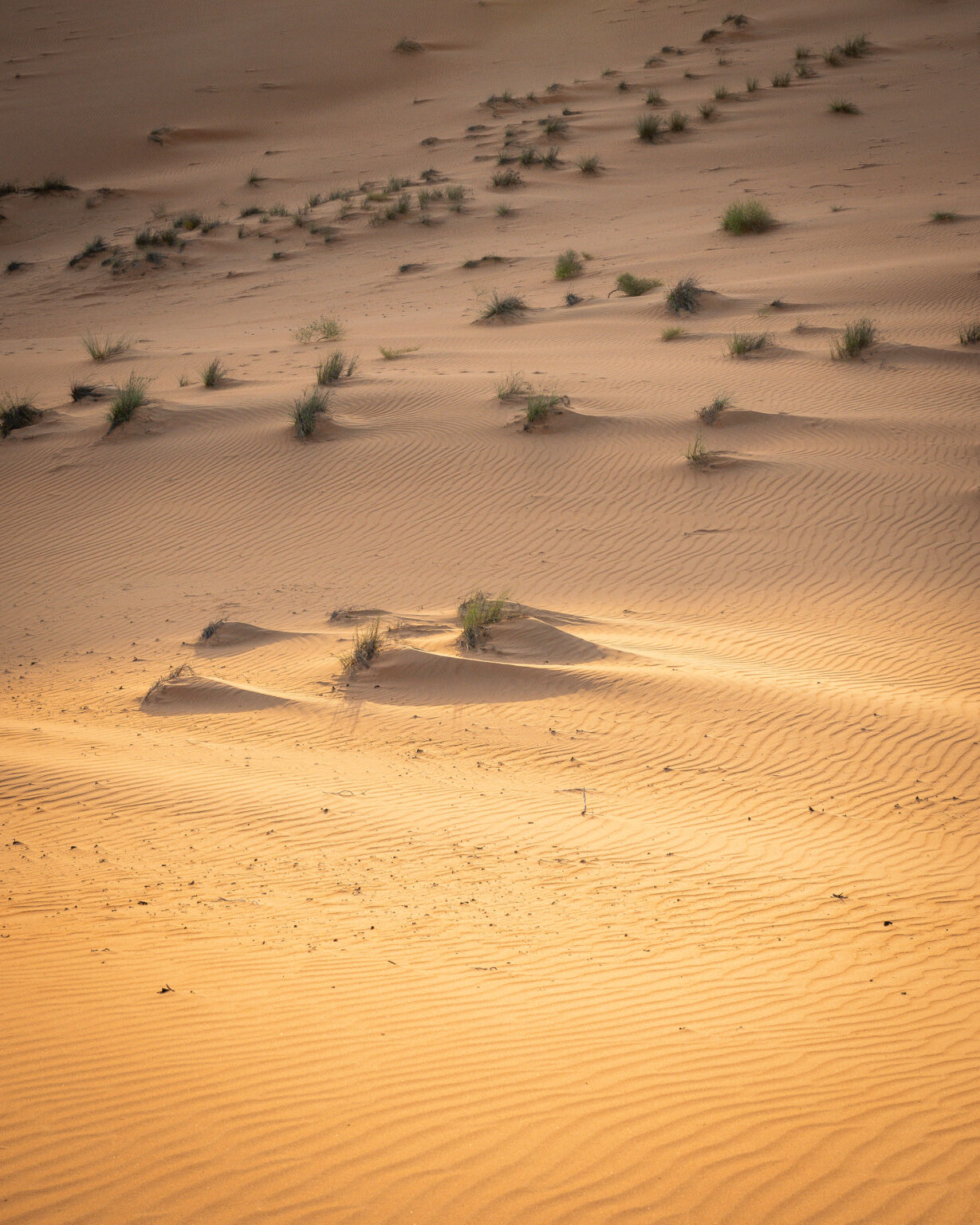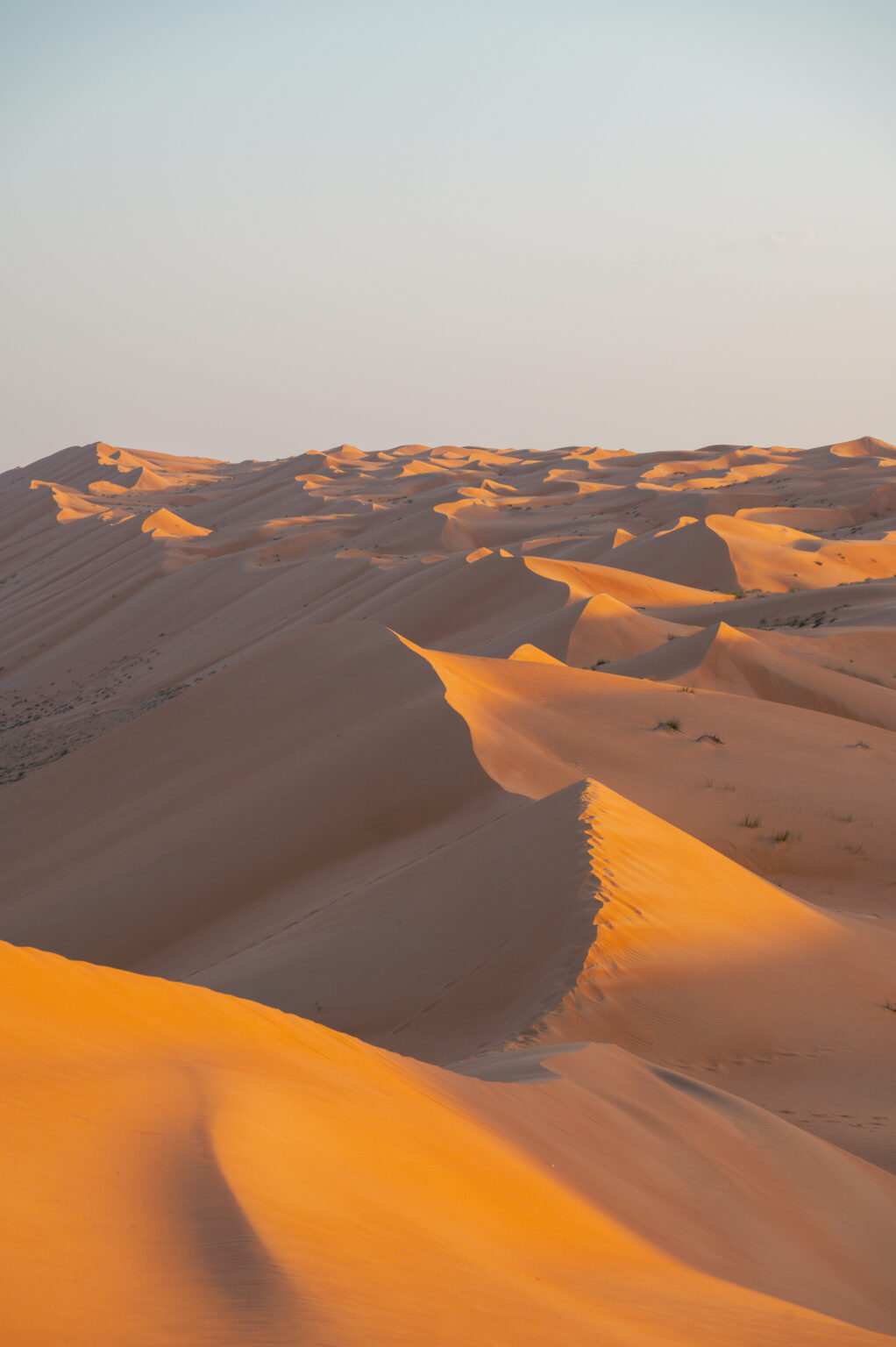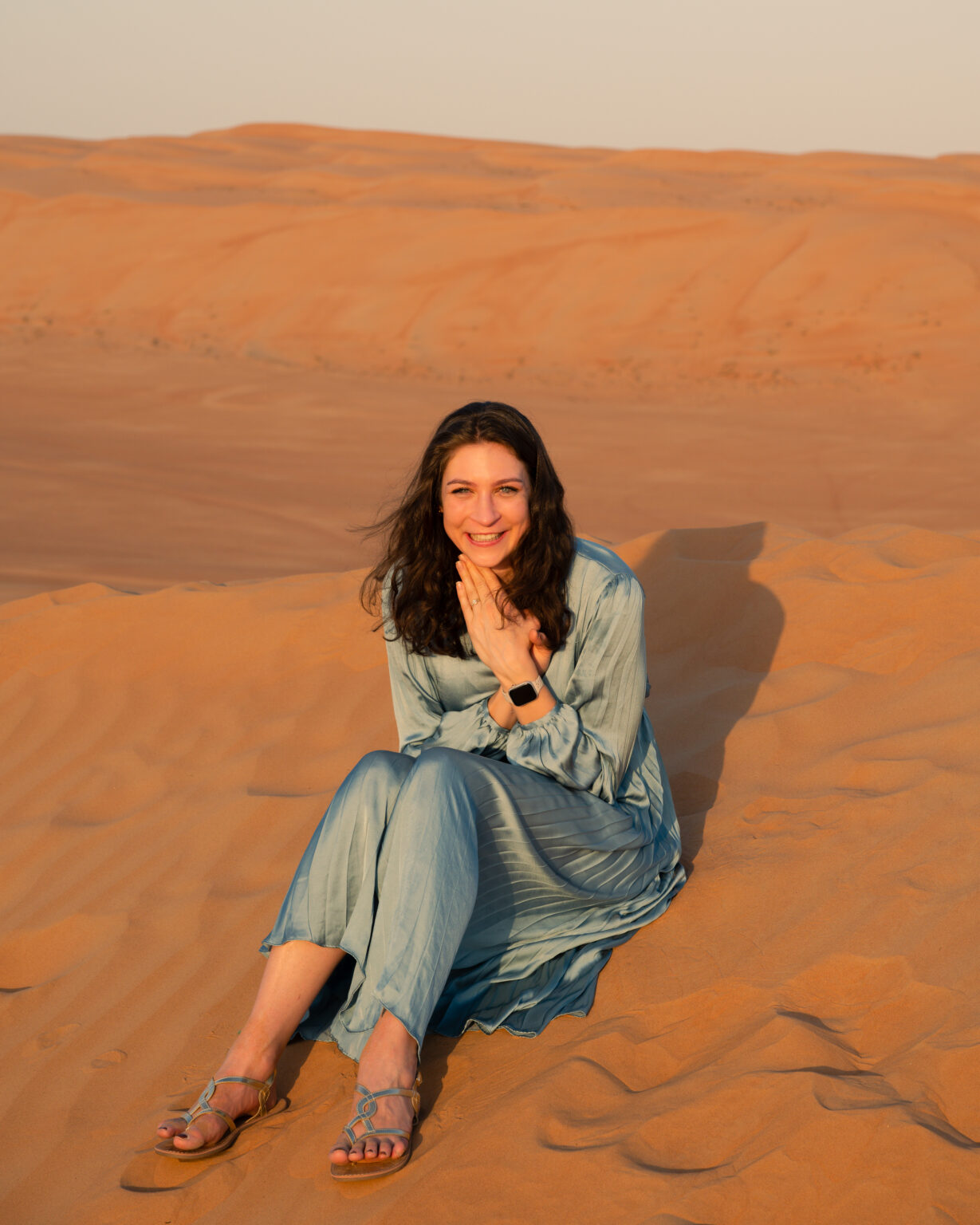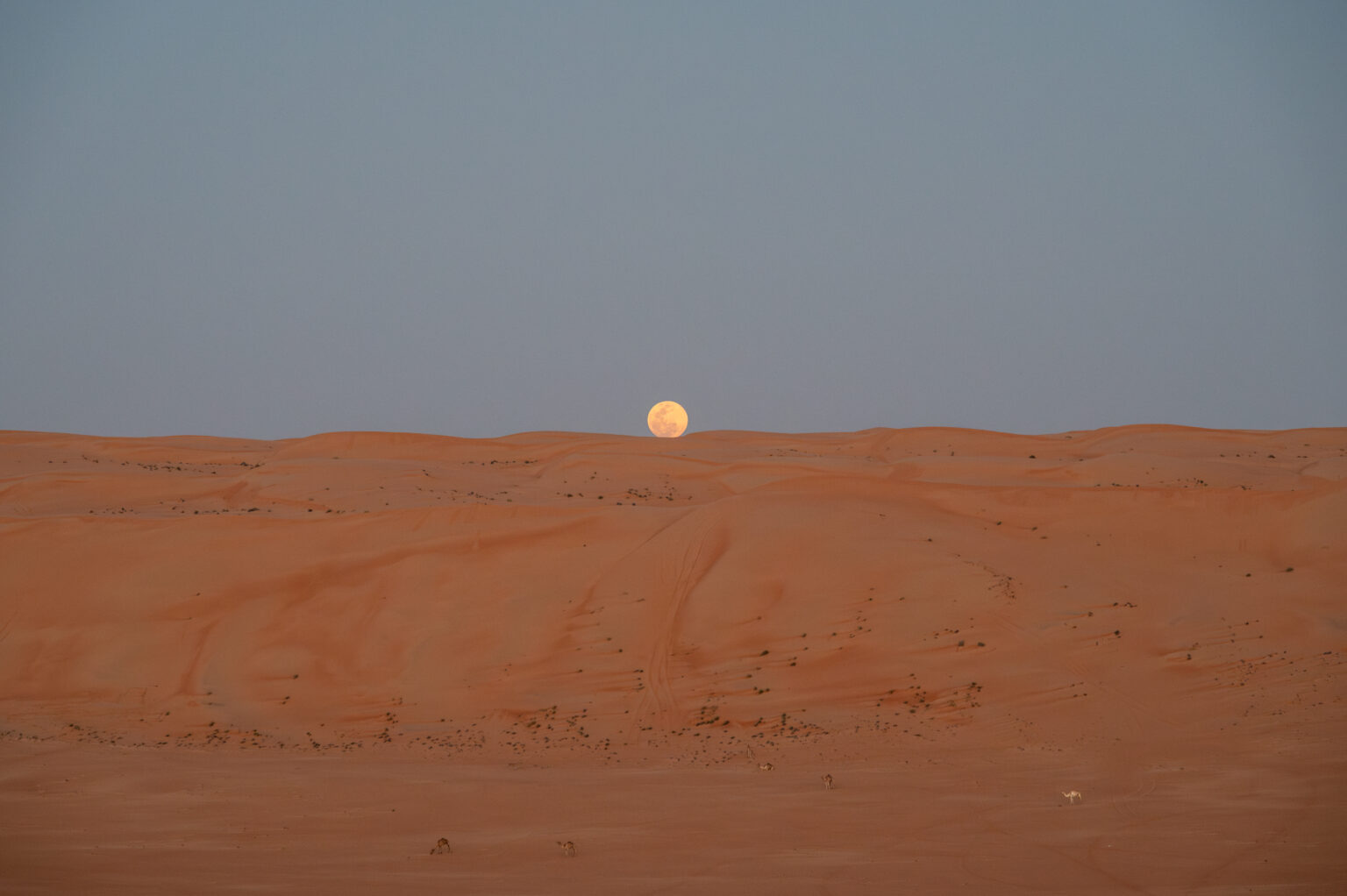In late winter, we travelled to Oman for 9 days. Such a fascinating and diverse country! This is going to be a long post, we took many good pictures with our Nikon Z6II and Z24-120 f/4 S, Nikon Z30 and Z40 f/2 and a Minolta X-500 with MD Rokkor 50mm f/2. As in previous posts, some scenes were captured with both an analogue and a digital camera to better understand the differences.
Day 1
It would be an understatement to say that we were extremely tired on day 1, considering we had an over-night flight, arrived at 5AM and got no sleep on the plane. We drove around in Muscat and did some minor sightseeing. The only picture of the day captures the view from our hotel room after loading a new roll of Kodak Ektar 100 film.
Day 2
After enjoying a delicious breakfast buffet (Omani cuisine is such a unique blend of Mediterranean, Arabic, Indian and African elements), we made our way south-east towards Sur. We made two stops on the way, the first one was somewhere along the coast, to capture the crystal clear waters and empty beaches.
The second stop we took on our way to Sur was Wadi Ash Shab. From a small parking area where the river enters the sea, visitors are taken by boat to the beginning of the trail inside the Wadi. Initially, the waters are quite muddy, but later they become crystal clear. At any point of the trail you are at risk of falling into the water and in many places to get forward you need to wade through the water (I am wondering if the similarity between the words “wade” and “Wadi” can be a coincedence). Since we did not bring appropriate shoes, we had to walk bare-foot, which was also not ideal as the rocks were very slippery. The Wadi does not have an end per-se, but at some point you hit a pool of water and in order to go further, you need to swim through it and continue on the other side. Maybe next time when we come prepared with water-proof bags and shoes! Thank you Wadi Ash Shab, you were amazing.
After another hour or so of driving, we arrived in Sur just in time for sunset and managed to capture the peaceful and quiet mood. What a day! Add some dinner, a shower and the cries of hundreds of seagulls – pure bliss.
Day 3
In the morning, we hiked up to a little defence tower strategically placed where the river meets the ocean. From there we were able to take in the breathtaking views of the old harbour and along the river inland. I even got to zoom into some colourful windows (although the image is still a heavy crop). The lone boat is an Omani Dhow, which once upon a time controlled the Persian Gulf and the trade routes to India and Africa.
Leaving Sur, we headed south towards Sharqiya Sands desert. At first, the roads were bad and driving was quite an adventure in itself, but after a while we entered a newly built highway and the rest of the journey was a breeze. In Al-Muntarib, we met a Beduin guide who drove us for 45 minutes through the desert to our desert camp. After settling in, we decided to hike up the dunes and enjoy the sunset and moonrise, which had a little surprise in store for Lena.
